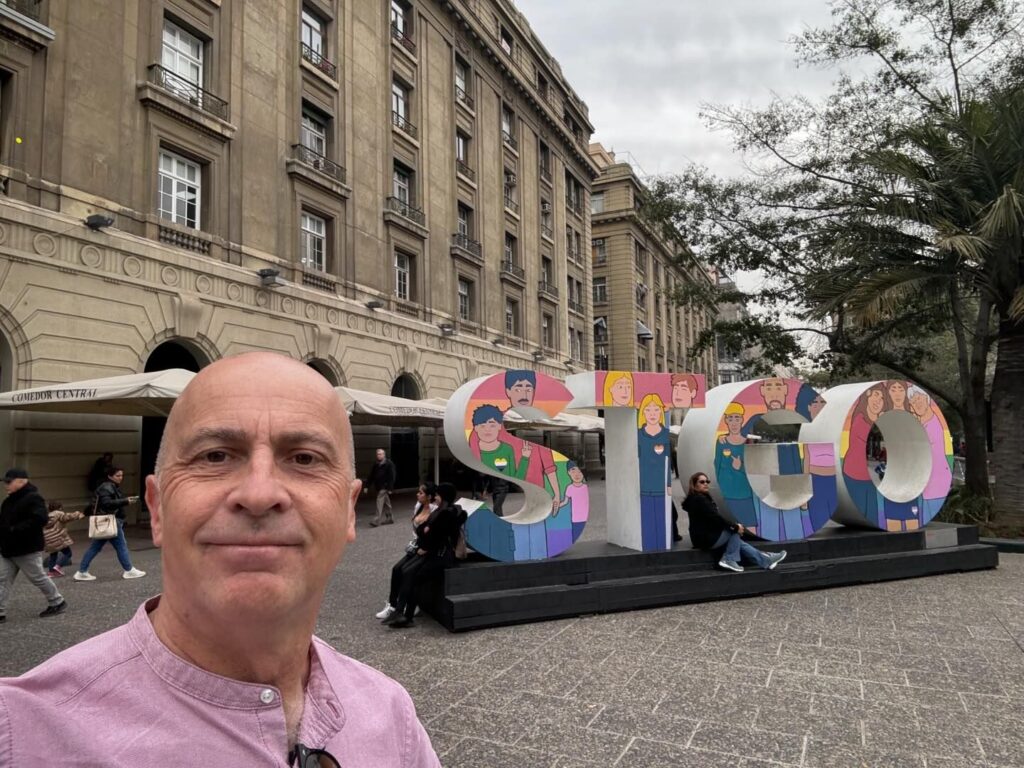
I rank every city I visit based on various factors, including aesthetics, culture, and transport.
Santiago, the capital of Chile in South America is the 242nd city of over 100,000 people I have visited.
Chile is my 85th country, so I’m pretty confident in my ratings!
- My Overall Rating: 79%
- My Ranking out of my top 242 Cities: 104 Not quite a top 100 city but it is pretty respectable
- Global Ranking: Mercer – Quality of Living Survey 91st out of 230, EIU – Best Cities Ranking 38th out of 70
- Why it should be visited: Stunning mountain views, rich history, vibrant culture, and fantastic wine.
- Negatives: Air pollution, occasional seismic activity and a rising petty crime rate.
- Would I return?: Yes
Location and Orientation
Santiago is the capital and largest city of Chile, nestled in a valley surrounded by the snow-capped Andes to the east and the Chilean Coastal Range to the west. The city sits at approximately 600 meters (1,968 feet) above sea level, providing a stunning backdrop of mountains that are visible from nearly every part of the city.
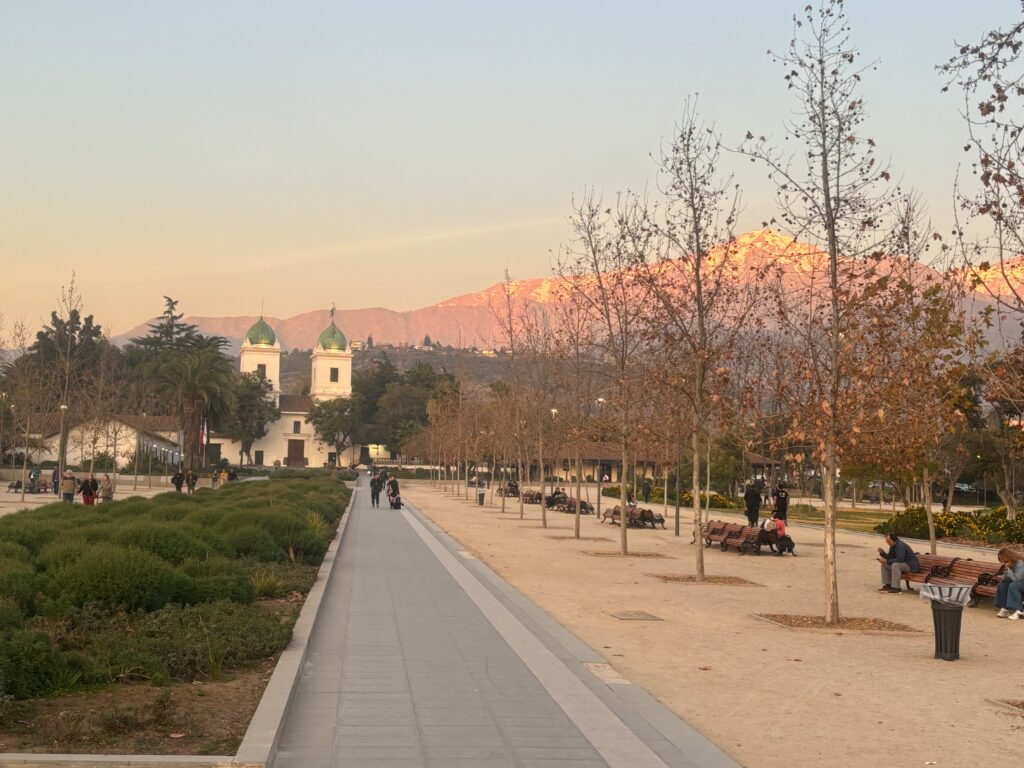
Founded in 1541 by Spanish conquistador Pedro de Valdivia, Santiago has grown from a modest colonial outpost into a bustling metropolis and the political, cultural, and economic heart of Chile. The city’s layout reflects its rich history, with historic neighbourhoods like La Moneda and Barrio Lastarria standing alongside modern financial districts and contemporary art scenes.
Santiago is strategically located in the central part of the country, making it a key hub for both domestic and international travel. The city is approximately 1,000 kilometres (620 miles) from Buenos Aires, Argentina, and around 3,000 kilometres (1,860 miles) from major capitals like Lima, Peru, and Rio de Janeiro, Brazil. Its proximity to the Pacific Ocean (about 100 kilometers or 62 miles to the west) and the Andes Mountains (directly to the east) makes Santiago a gateway to some of South America’s most breathtaking landscapes.
The city is divided into several districts (comunas), each offering a unique slice of life. From the bustling streets of the central business district to the bohemian vibe of Bellavista, Santiago’s diversity is one of its greatest strengths.
Getting There
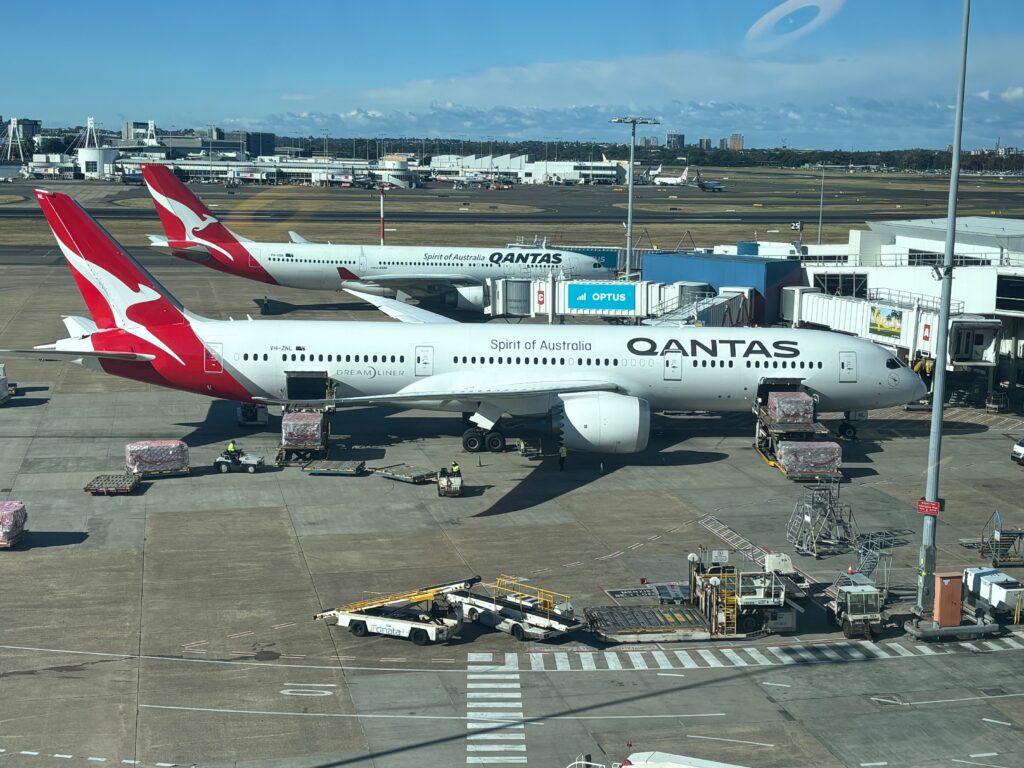
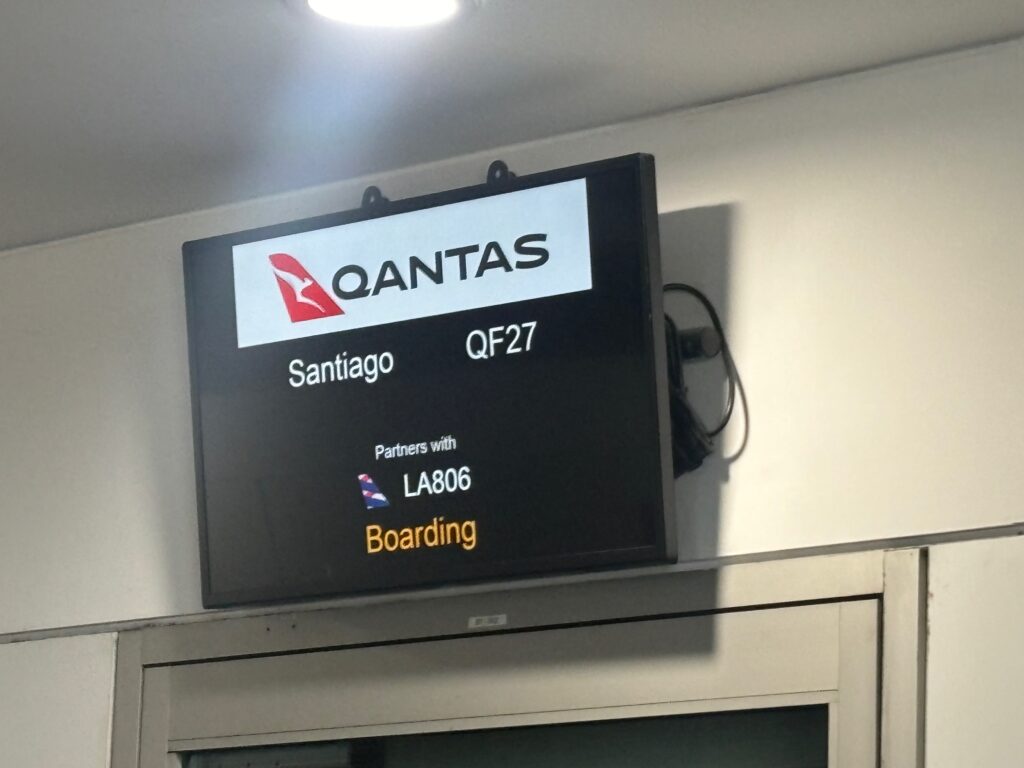
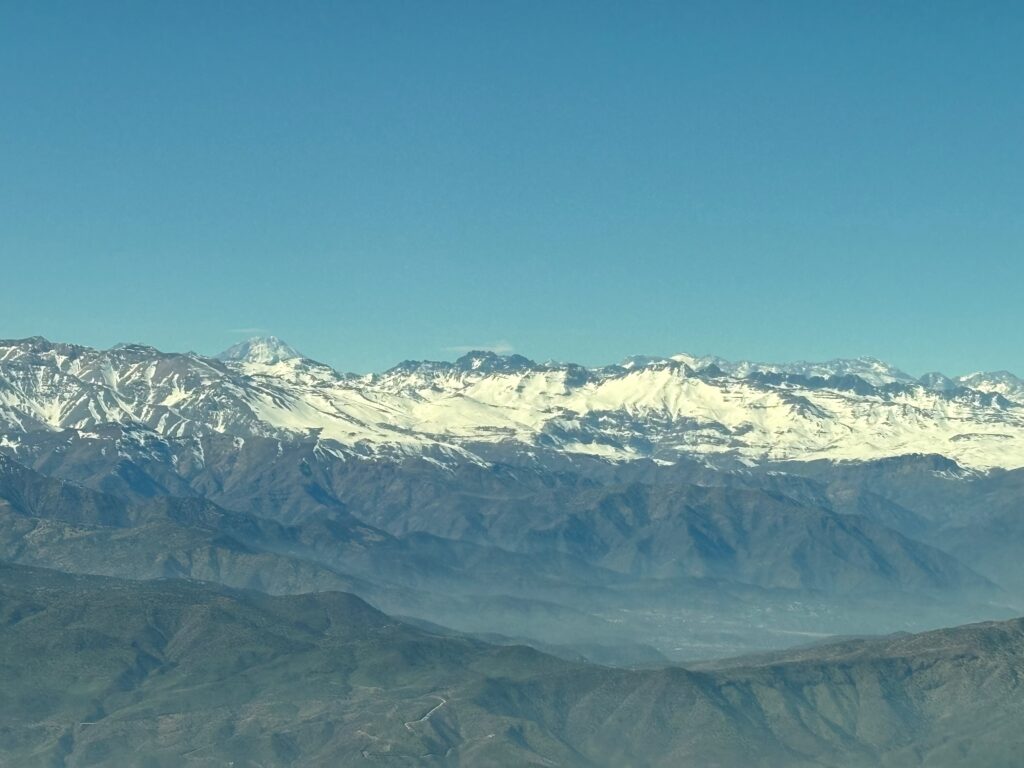
I flew direct from Sydney, Australia. Planes also connect Santiago non-stop to:
- New Zealand
- Europe (Amsterdam, Frankfurt, Madrid, Paris etc.)
- Latin America (e.g., Buenos Aires, Lima, São Paulo, Mexico City, Bogotá),
- the USA (including Miami, New York City).
Entering Chile was a straightforward process, but it’s important to be aware of the strict customs regulations, especially regarding food, plant, and animal products.
Obtaining a visa for Chile can be a complex and sometimes frustrating process, depending on your nationality. While many travellers from certain countries can enter Chile without a visa for up to 90 days, others may find the visa application process to be a bit of a nightmare. The requirements can vary significantly, and the process can involve lengthy waits, detailed documentation (including multiple bank account statements, police reports, etc.), and often requires several emails and a visit to a Chilean consulate. It’s crucial to start the visa application well in advance of your trip, ensuring you have all the necessary paperwork and meet the specific requirements for your nationality. And remember to breathe—I nearly gave up after the third email requesting more information.
Riding a bus to Santiago is a common choice for travellers, and buses arrive from various parts of Chile and neighbouring countries. The bus ride offers a comfortable and scenic way to enter the city, with modern coaches often equipped with reclining seats, air conditioning, and even Wi-Fi. Major bus terminals like Terminal Alameda and Terminal San Borja handle these routes, connecting Santiago to cities like Valparaíso, Viña del Mar, and even long-haul destinations like Mendoza in Argentina.
There are just four train services to Santiago main station:
- From the suburban community of Nos (20 km) which I rode. marking my first train ride in South America. I’ve now ridden trains on every continent: Africa, Asia, Australia, Europe, North America, and now South America. If they ever build a railway in Antarctica, please count me in
- From Rancagua and San Fernando (136 km)
- From Chillán (397 km),
- Temuco (689 km away)
Getting Around: 84%
While not as extensive as the transit systems in Paris or Berlin, Santiago is still quite impressive on my transport scale.
From the Airport
Most international travellers arrive at Comodoro Arturo Merino Benítez International Airport, located 15 kilometres (9 miles) northwest of the city centre. The metro system does not yet connect to the airport, but you can easily take a taxi or choose the airport shuttle operated by Centropuerto. Another option is Turbus, which also offers a shuttle service. The buses are an excellent choice, leaving from the International Terminal (T2) on the first level in front of door 4 or from the Bus Station connected to the National Terminal (T1). Centropuerto finishes at Los Héroes metro station, where you can hop onto the network after purchasing a rechargeable Bip! card. Security there was excellent, although I would not recommend taking the bus if arriving at night. Turbus drops you at Alameda next to the main station, which, to my mind, is not as safe as Los Heroes.
The Metro
Santiago’s Metro is the pride of the city. It has seven lines (numbered 1-6 and 4A) and 143 stations over 149 kilometres (92.6 miles), connecting most of the city’s major districts. The metro carries 2.5 million people a day. It is fast, frequent, easy to navigate, always busy, and pretty safe. Take the usual precautions.
The metro is supplemented by buses with over 300 routes crisscrossing the city and taxis that I didn’t use. There was a tram (streetcar) system in Santiago, but it was abandoned . Some traces of tracks remain.

Access to the buses and trains is via a contactless rechargeable smart card called Bip! available at metro stations from vending machines (that never seem to work) or helpful attendants at ticket booths.
I topped up with no hassles at machines in the stations.
My Top 20 Sights in Santiago:
1. Cerro San Cristóbal: Ride the funicular or hike up this hill for panoramic views of the city and the Andes. Don’t miss the statue of the Virgin Mary at the summit. Metro: Baquedano (Line 1 & Line 5)
2 Plaza de Armas: The historic centre of Santiago, where you’ll find the Metropolitan Cathedral and the central post office, along with a lively atmosphere. As I wandered through Plaza de Armas, I witnessed a microcosm of Santiago’s society. Ordinary citizens, tourists, business people, and youths sat or went about their daily routines in the plaza. Tour guides led groups of tourists, while street vendors sold chewing gum and other small items. In the middle, open-air Christian preachers passionately delivered their messages. The square also had a blatant group of pickpockets, gang members, and drug sellers operating openly. I also saw prostitutes guarding their territory across the square, opposite the cathedral, with their pimps watching closely. Private security guards and police patrolled the area as a symbol of maintaining order. Plaza de Armas remains a vibrant and essential must-visit for the city. Metro: Plaza de Armas (Line 5)
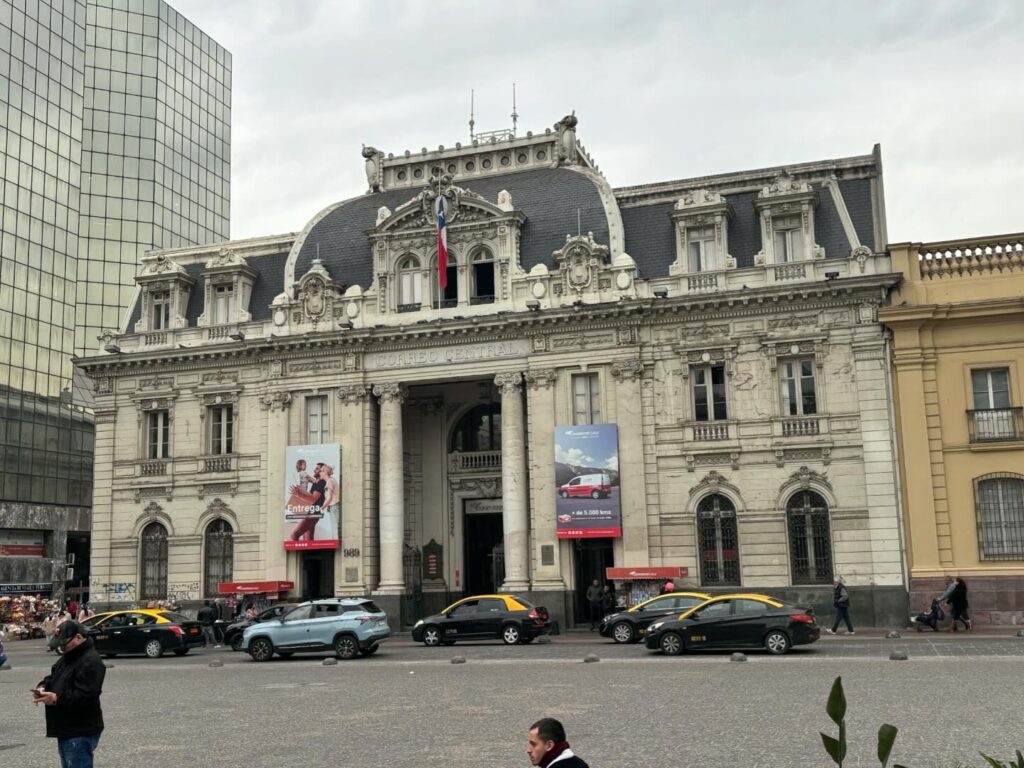
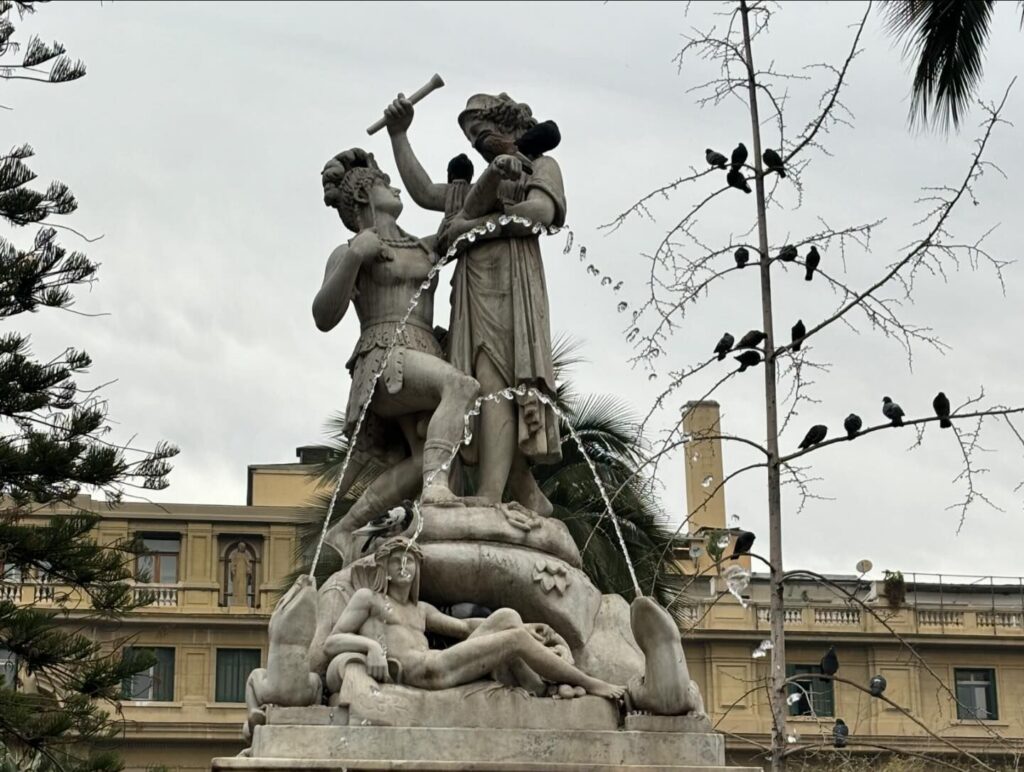
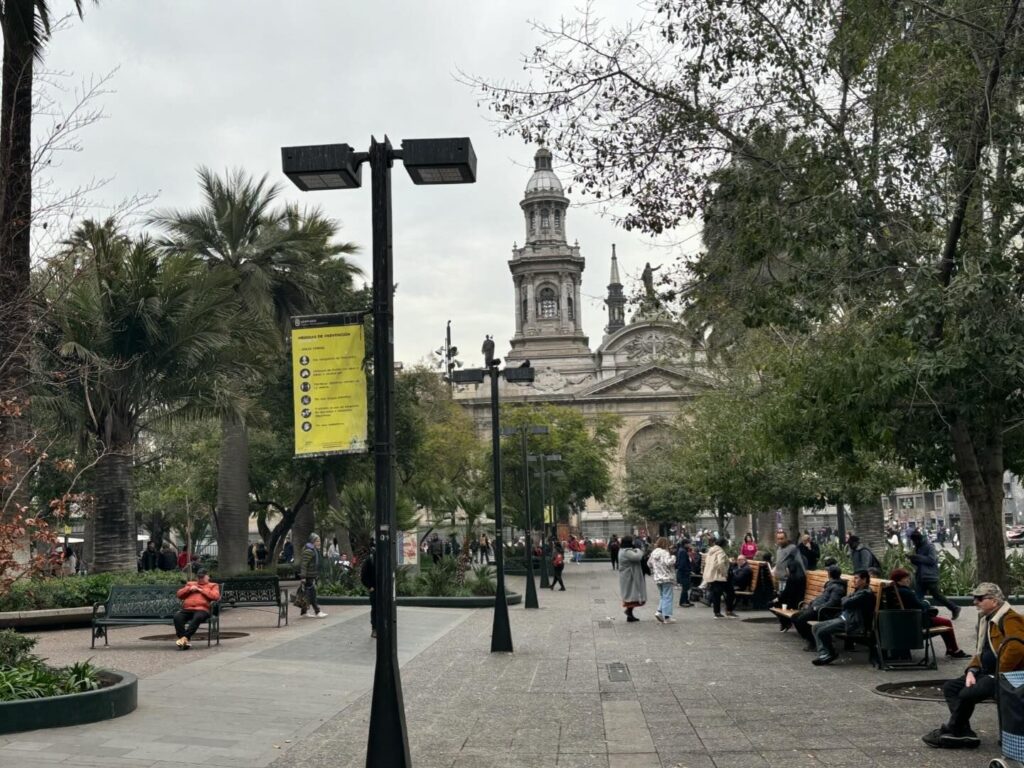
3 Museo Chileno de Arte Precolombino: One of Santiago’s finest museums, dedicated to the pre-Columbian art and culture of Latin America. Metro: Plaza de Armas (Line 5)
4 Museo de la Memoria y los Derechos Humanos: A sobering museum that documents the human rights abuses during the 1970s Pinochet dictatorship. Metro: Quinta Normal (Line 5)
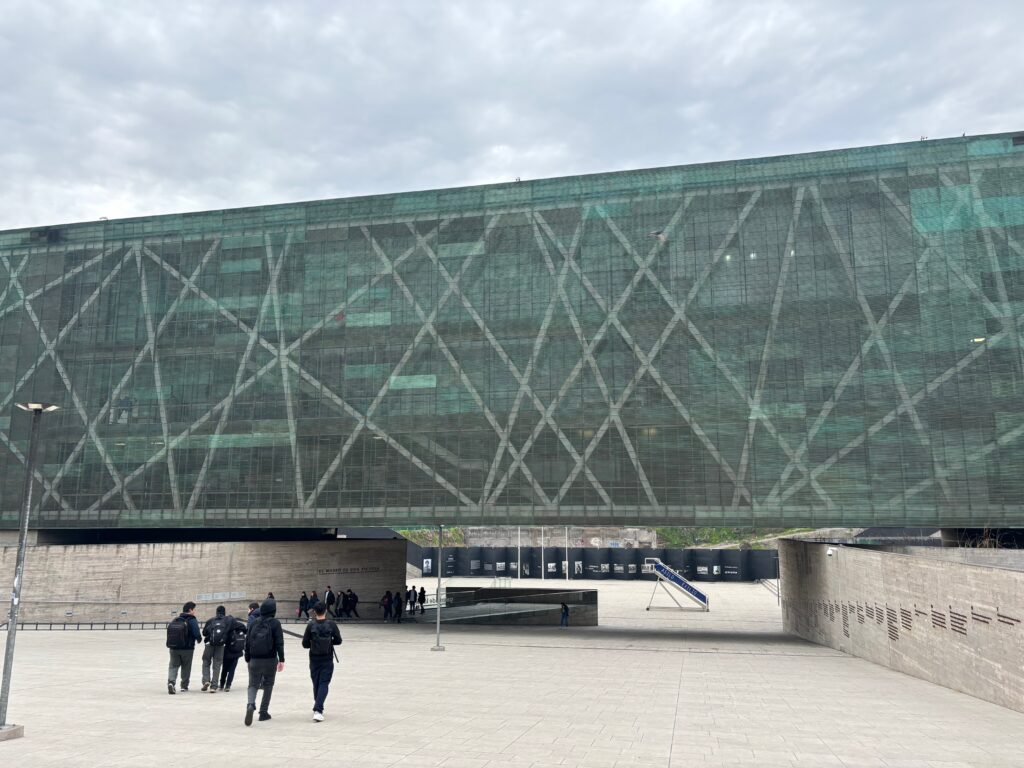
5. Barrio Lastarria: I had a wonderful time exploring this vibrant 19th-century neighbourhood. Located in the heart of Santiago, it’s named after José Victorino Lastarria, a prominent Chilean writer and politician. It’s known for its cafes, boutiques, independent bookstores, art galleries, and craft shops. Add in the Museum of Visual Arts (MAVI) and the Gabriela Mistral Cultural Center, and it’s a haven for art lovers and culture enthusiasts. Metro: Universidad Católica (Line 1) or Bellas Artes (Line 5)
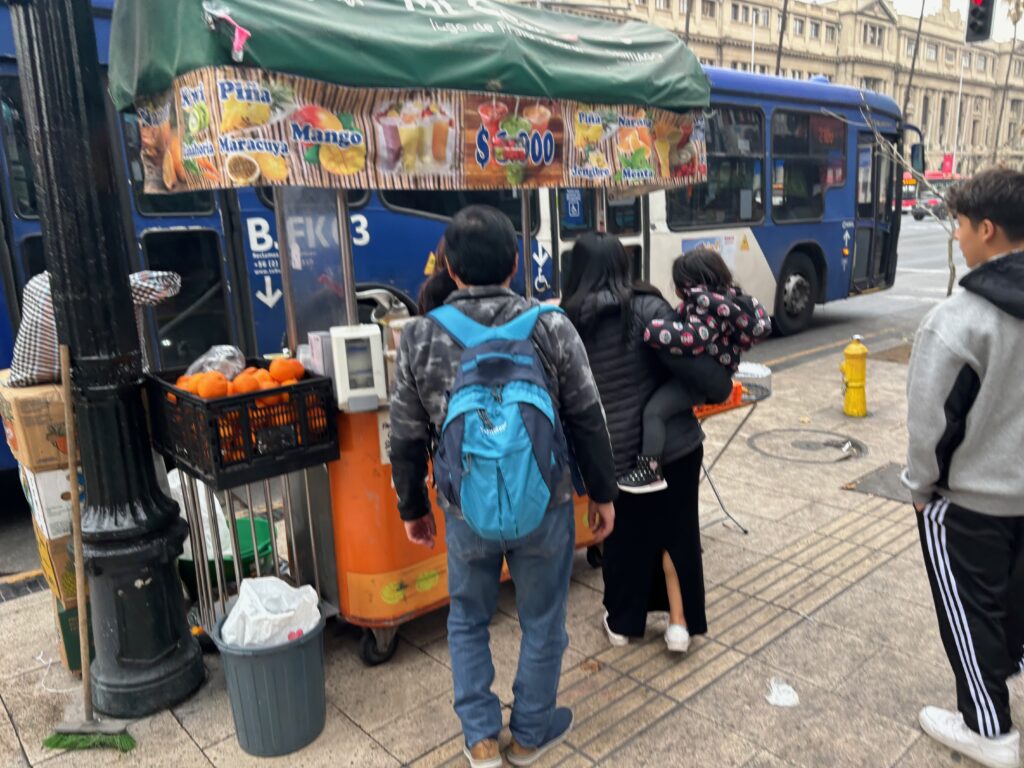
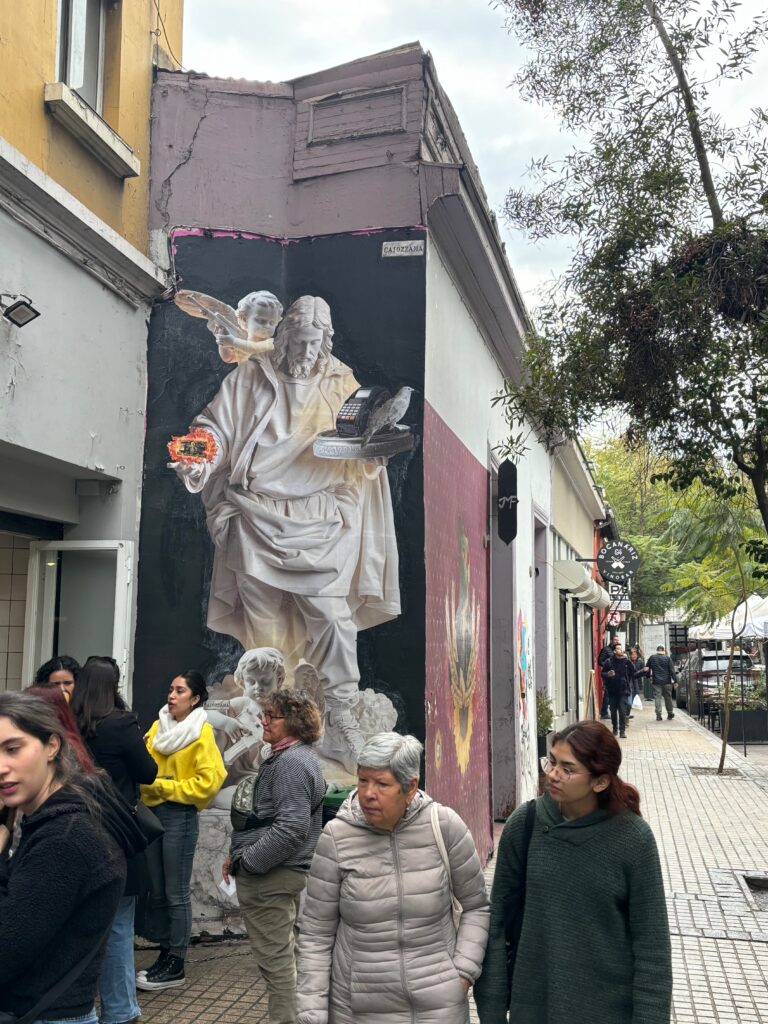
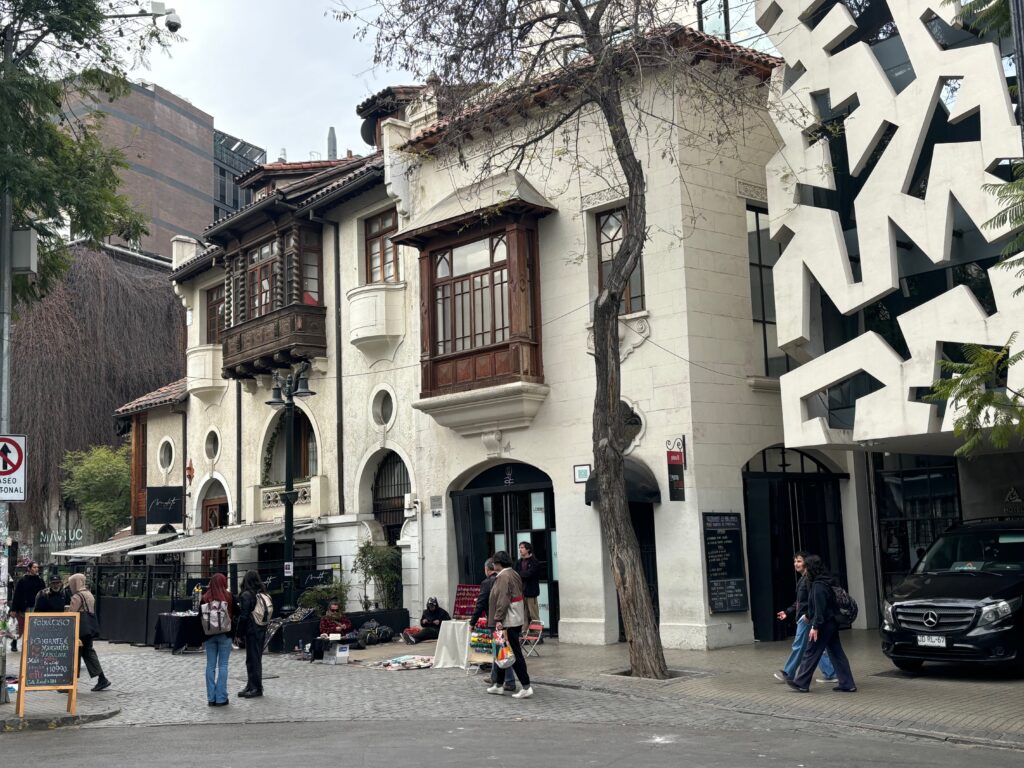
6 Bellavista: Also needs to explored, this bohemian district’s street art, colourful houses, and lively nightlife. Visiting La Chascona, Pablo Neruda’s house, is a must.
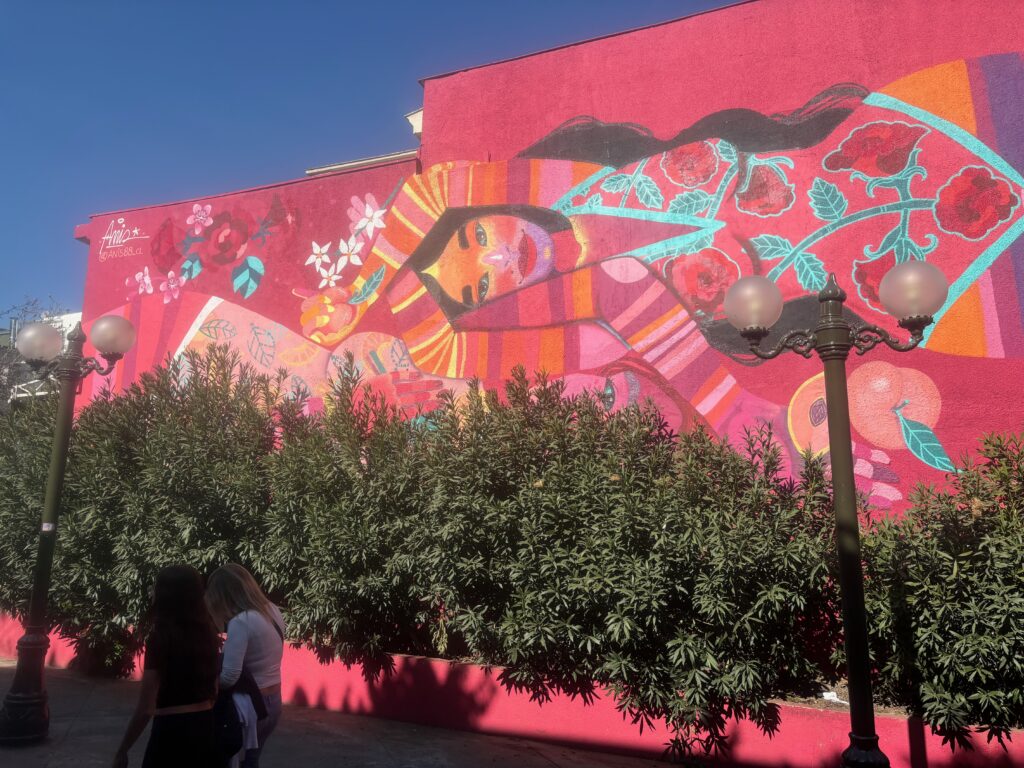
7. La Providencia (where I stayed) is one of Santiago’s more upscale neighborhoods, offering a variety of good shops, fabulous restaurants, church buildings and cultural attractions. La Providencia also has a lively nightlife, with numerous bars, cafes, and clubs that attract a diverse crowd. Metro: Manuel Montt and Pedro de Valdivia metro stations (Line 1)
8 Gran Torre Santiago: I had a great visit up the tallest building in Latin America, offering stunning panoramic views of Santiago and the Andes from its observation deck. Metro: Tobalaba (Line 1 & Line 4)
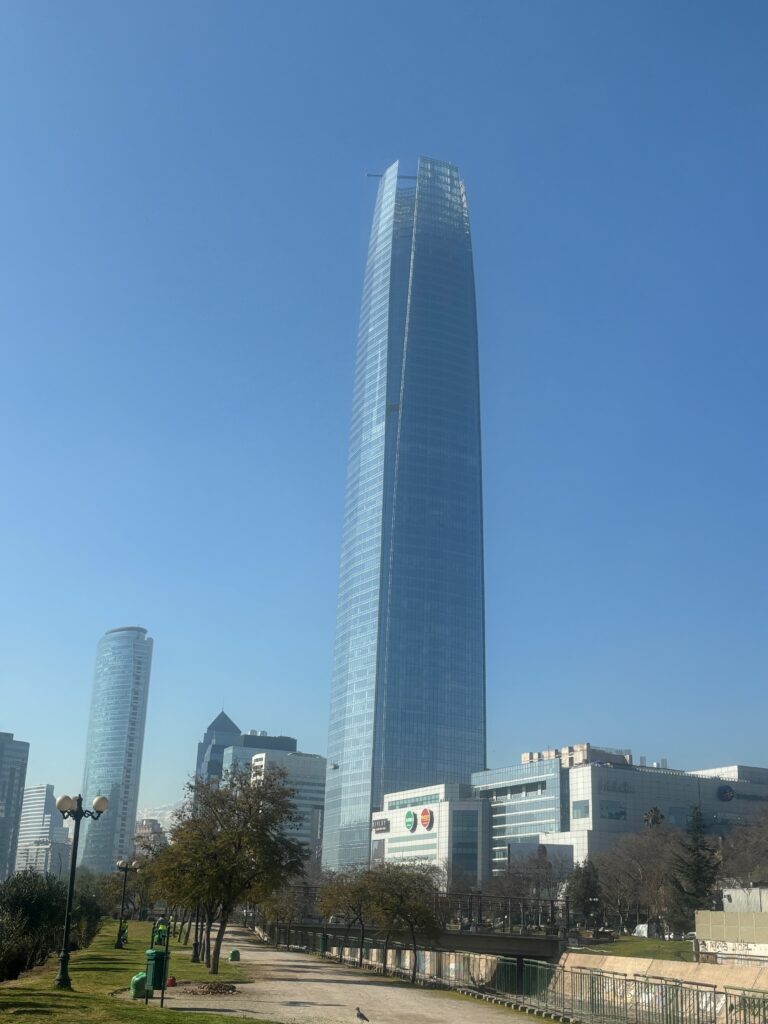
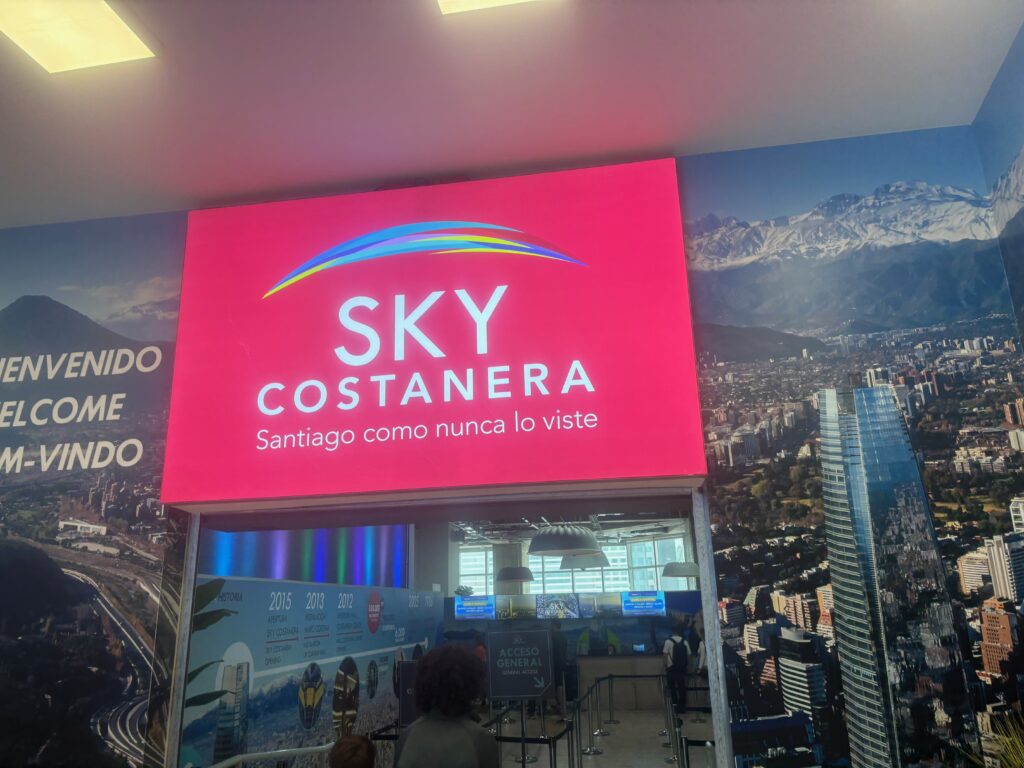
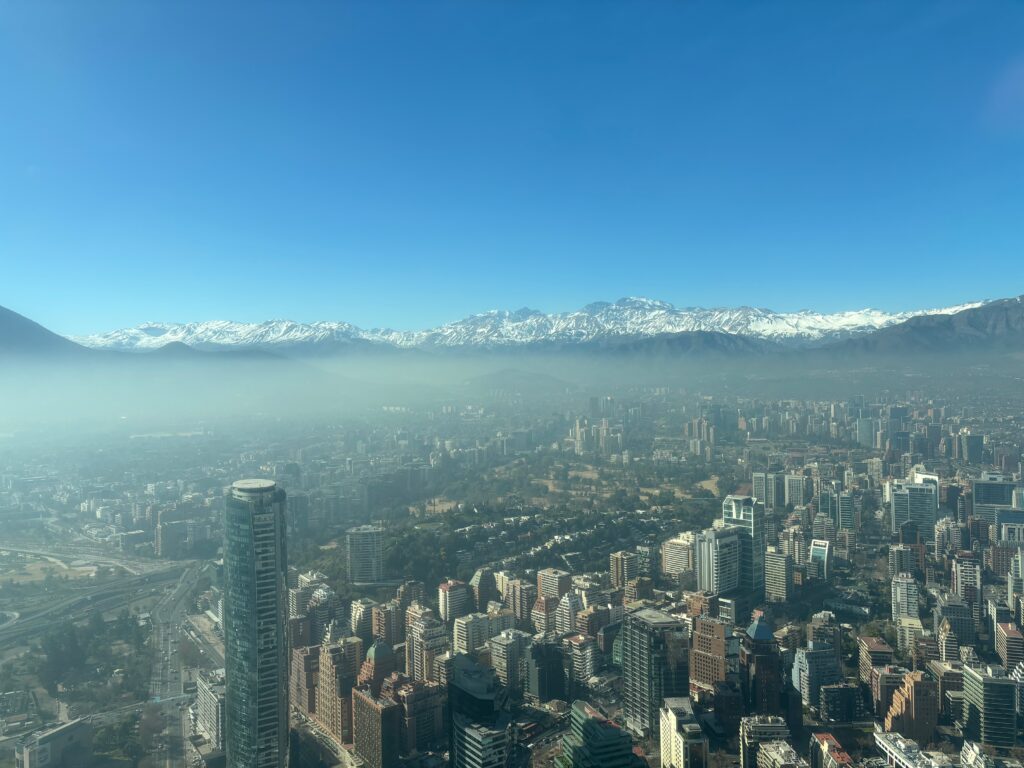
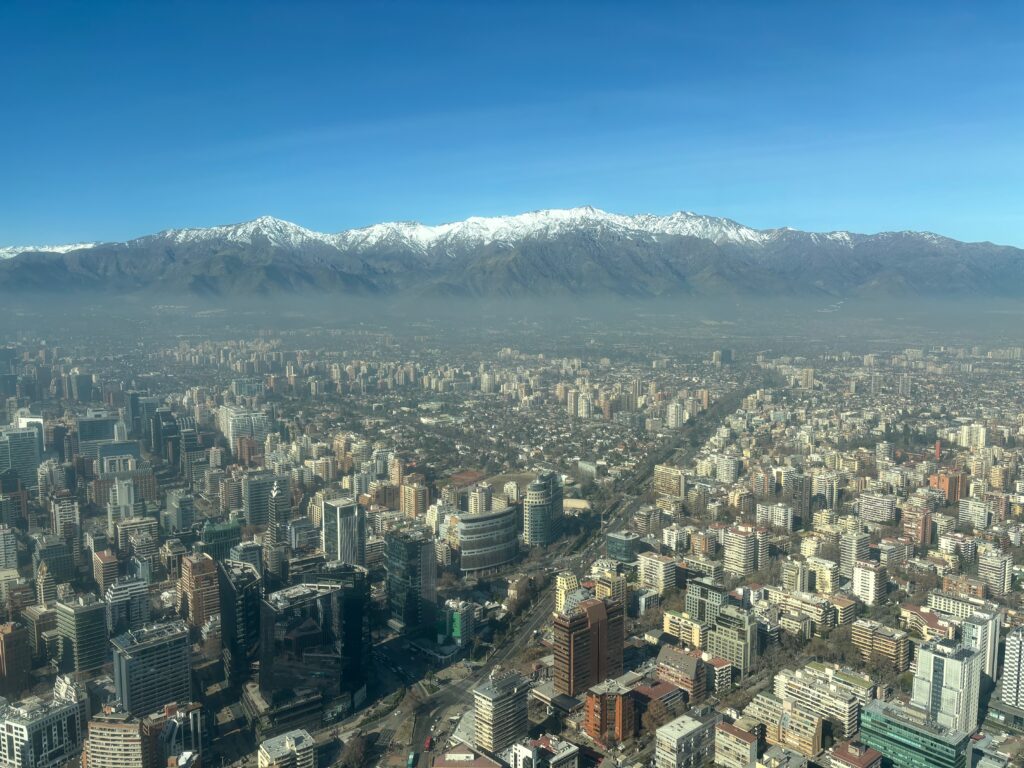
8. Museo Nacional de Bellas Artes: The National Museum of Fine Arts is housed in a beautiful Beaux-Arts building. Designed by Chilean architect Emile Jéquier, who drew inspiration from the Petit Palais in Paris, it was inaugurated on September 21, 1910, to celebrate the centenary of Chile’s independence. The Beaux-Arts style of the building, with its grand facade, intricate details, and large glass dome, makes it a stunning landmark in Santiago. The museum boasts an impressive permanent collection that spans several centuries, featuring works by prominent Chilean and international artists. However, most of these masterpieces are not on display right now due to considerable renovation work being carried out. The renovations aim to preserve and enhance the museum’s historic architecture. Metro: Bellas Artes (Line 5)
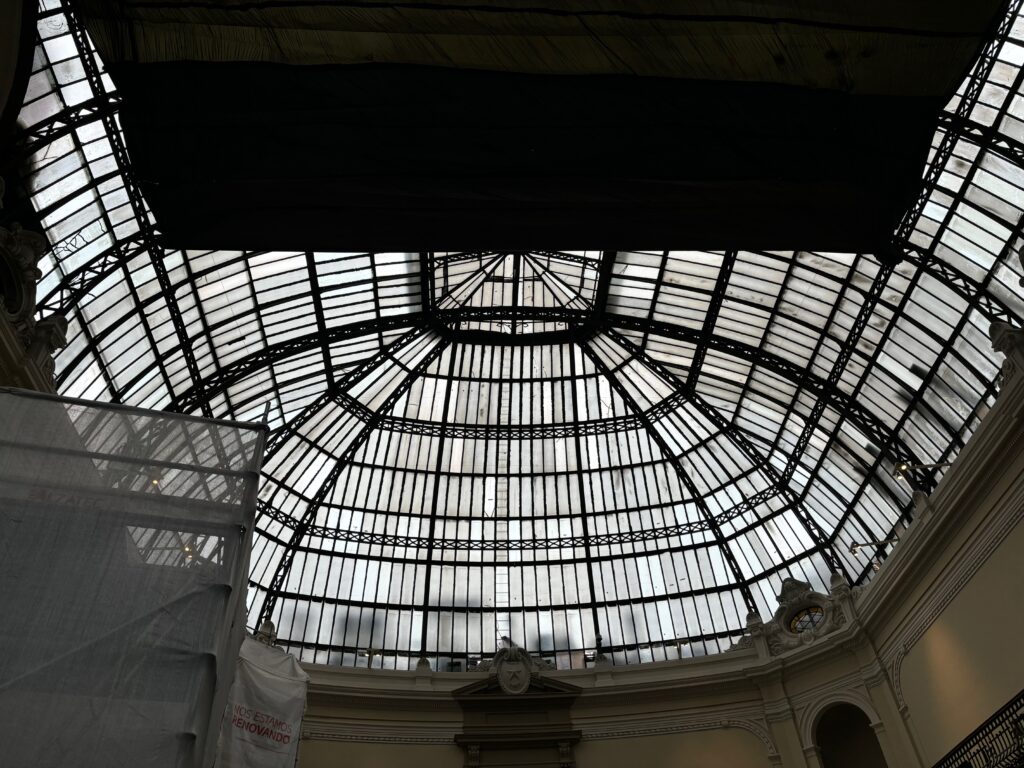
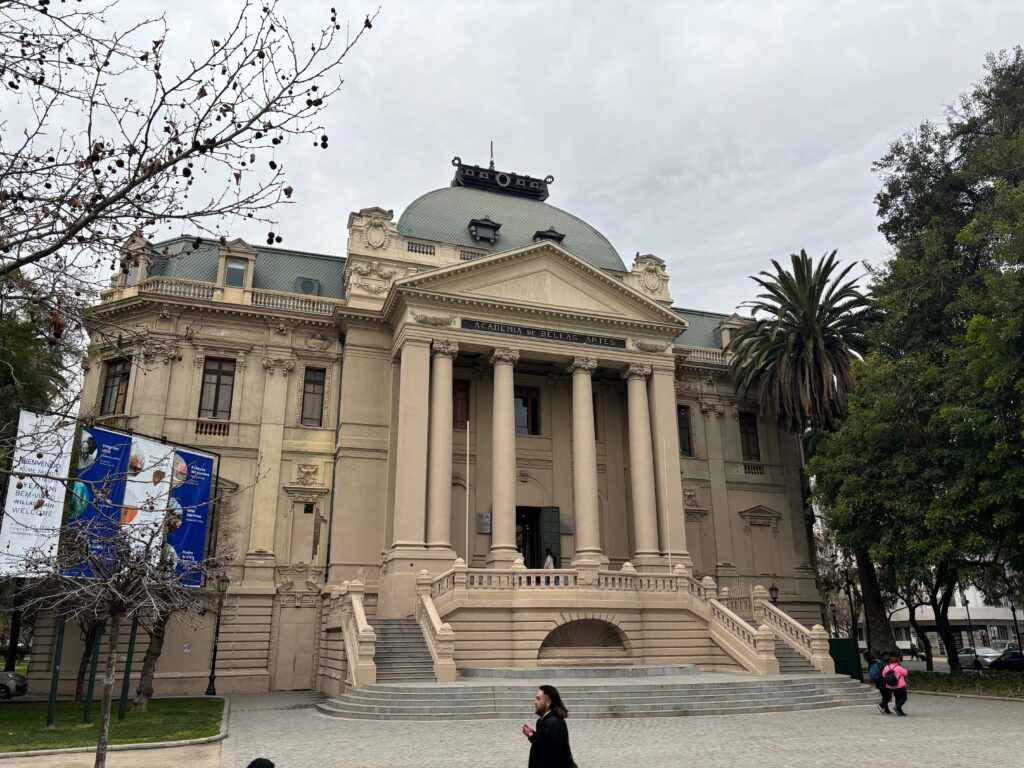
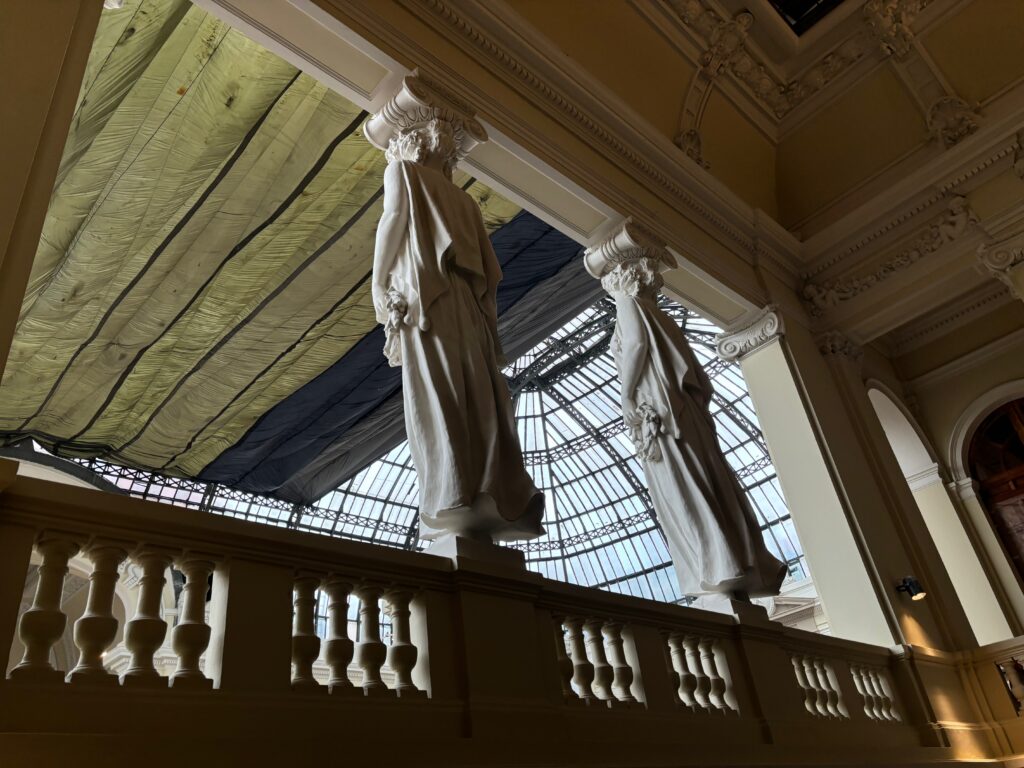
9. Los Dominicos Market: A traditional Chilean craft market located in the upscale Las Condes neighbourhood, offering a wide variety of handmade goods, jewellery, and art. I enjoyed a delicious meal here, surrounded by an atmosphere of music and the stunning Andes mountains as a backdrop. Metro: Los Dominicos (End of Line 1)
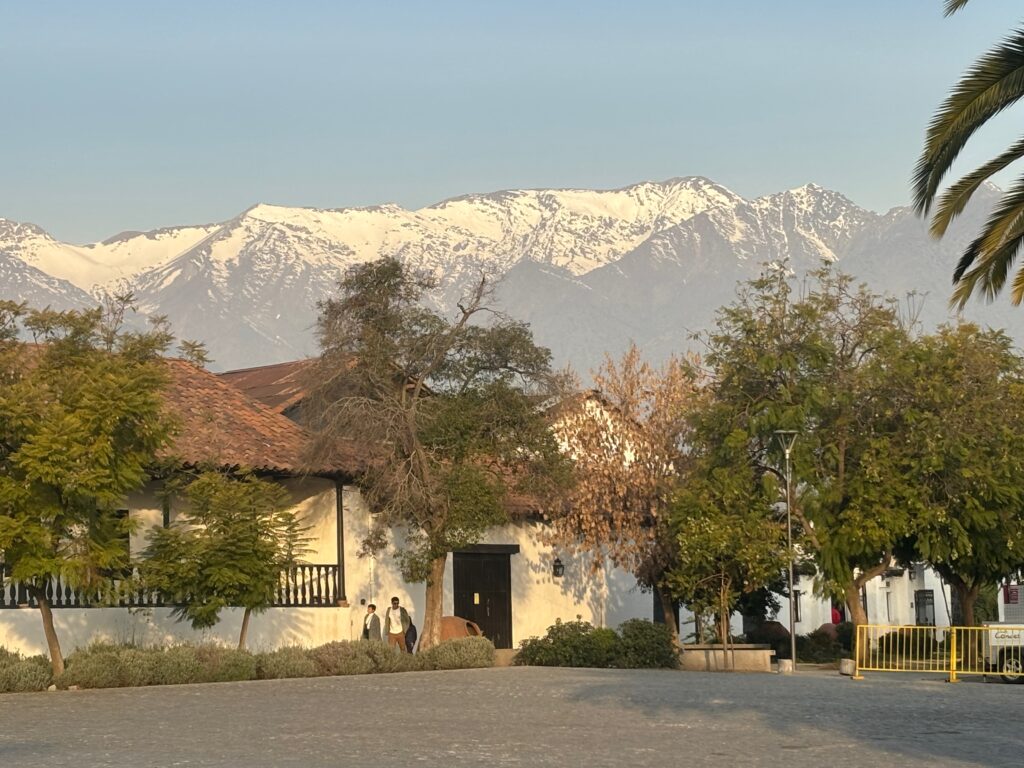
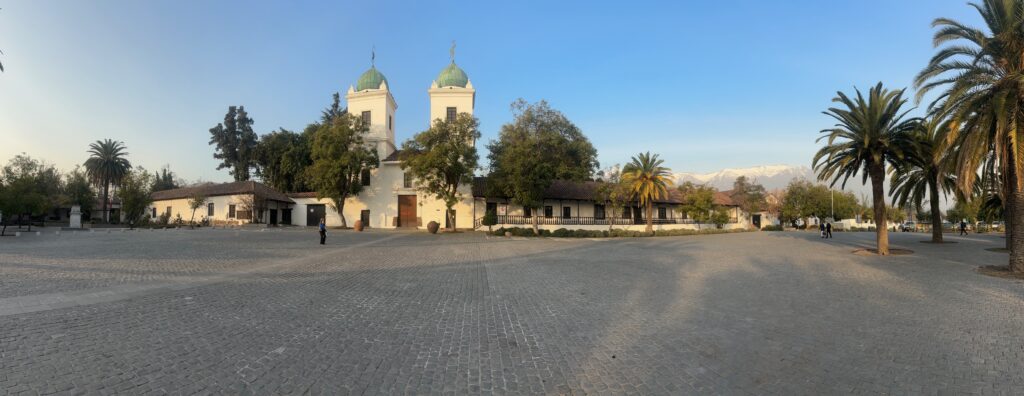
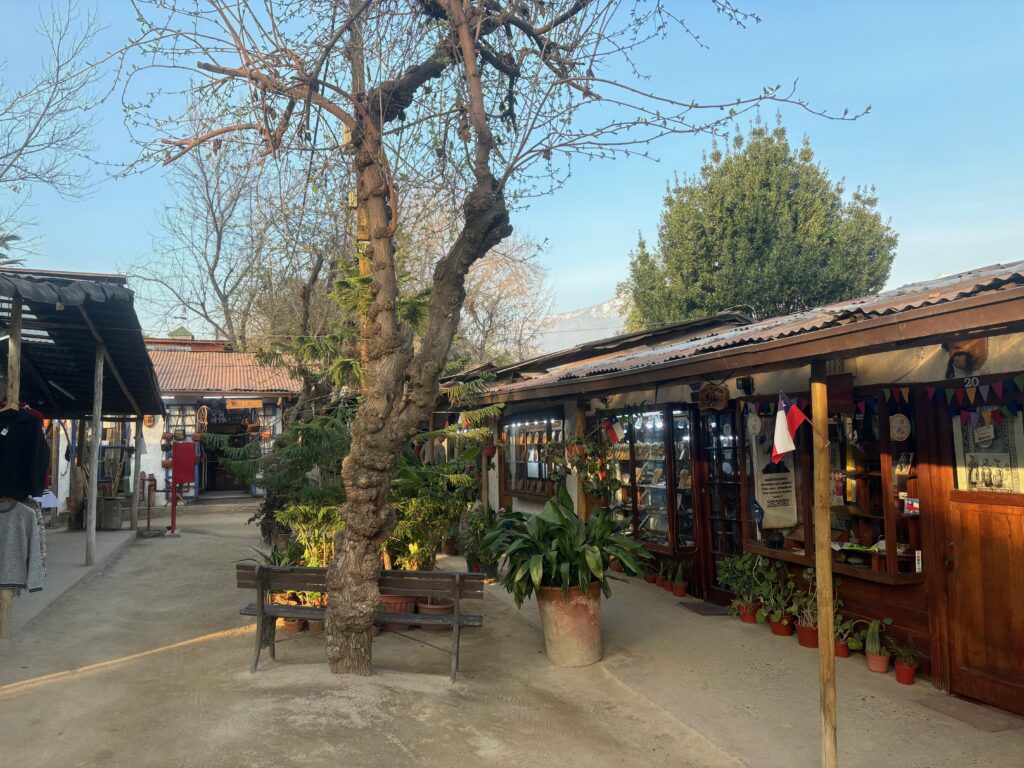
10. Parque Bicentenario: A beautiful park in the Vitacura district, perfect for a relaxing afternoon walk or a picnic. Metro: El Golf (Line 1), then a bus, taxi or walk.
11. Parque Forestal: A large urban park running along the Mapocho River. It’s a great place for a leisurely walk and is home to the aforementioned Museo Nacional de Bellas Artes and the Museum of Contemporary Art. El Caballo,” a famous sculpture by Fernando Botero, is located in Parque Forestal, right in front of the Museo de Arte Contemporáneo (MAC) in the western part of the park. This sculpture is a great example of Botero’s signature style, with its exaggerated and voluminous forms. It’s a must-see for art lovers visiting Santiago, especially those who appreciate Botero’s work. Some people may feel uneasy in the park as there were a lot of homeless people wandering around it. Metro: Bellas Artes
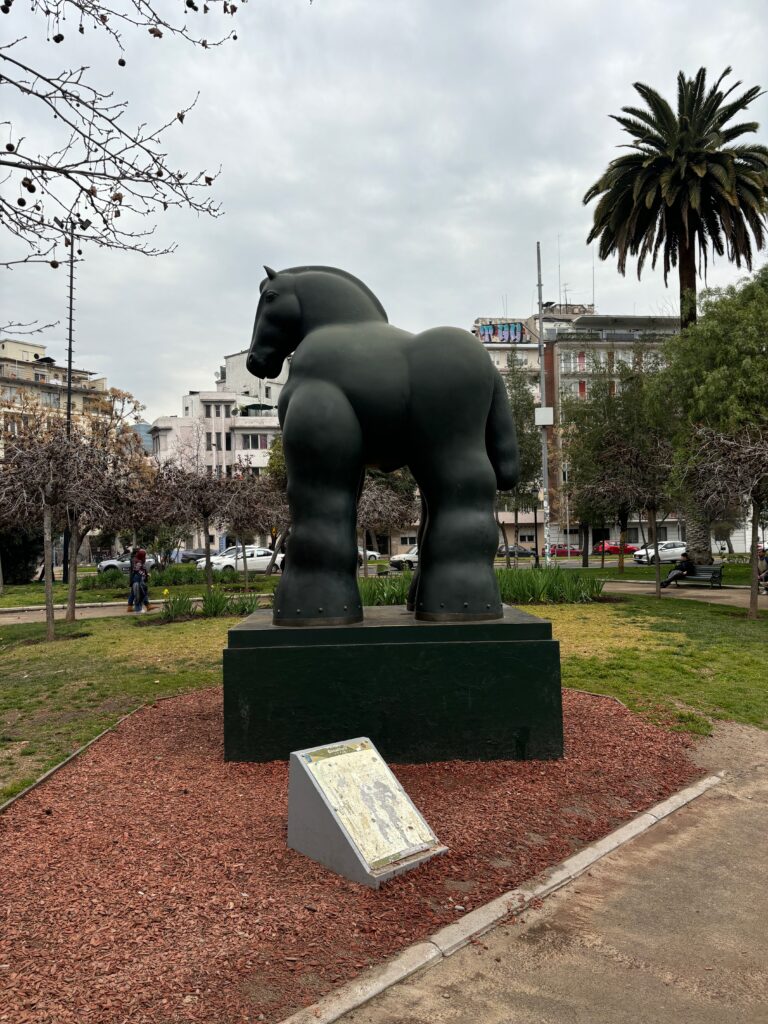
12 Museo de Arte Contemporáneo: Santiago’s modern art gallery showcasing contemporary Chilean and international artists in a striking building that blends modern and classic architecture.
13. Barrio Yungay and Barrio Brasil were other great areas to explore for street art in Santiago, particularly around Avenida Portales. In these neighbourhoods, you’ll find an array of murals and street art that often carry strong social and political messages. Avenida Portales itself is known for its long walls adorned with colourful and impactful murals. These works of art are a vivid expression of the local culture, history, and current events, offering a raw and authentic look at Santiago’s urban art scene. The area is less touristy than Bellavista or Lastarria, making it a great spot for those looking to explore a more local side of the city’s street art culture.
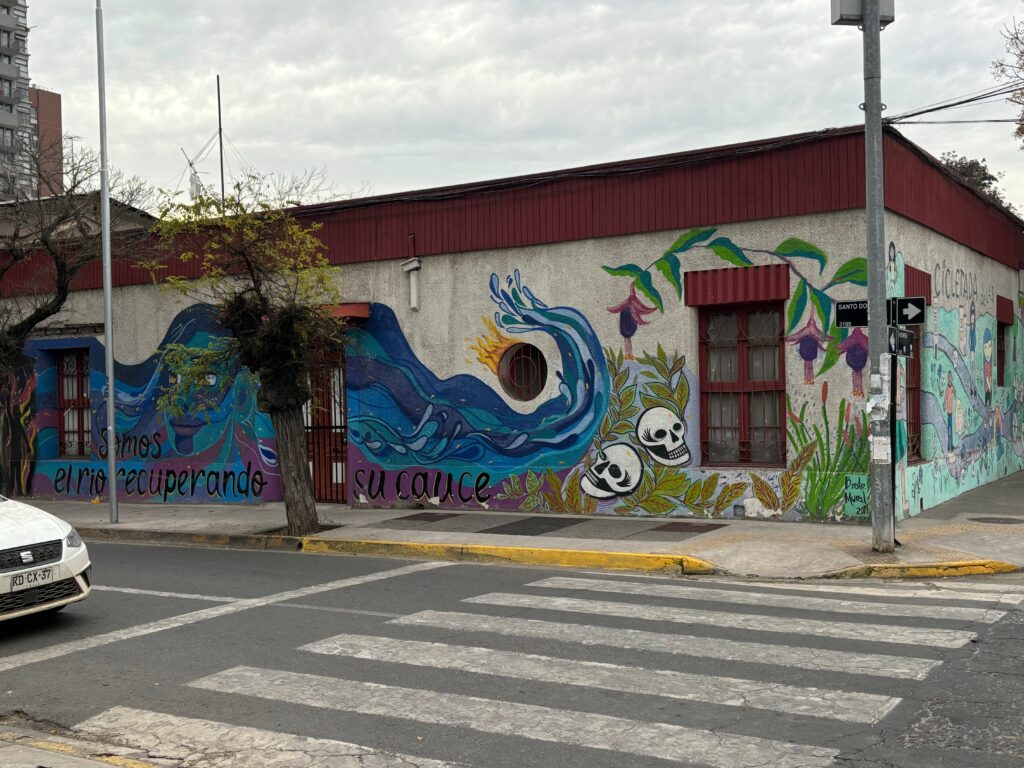
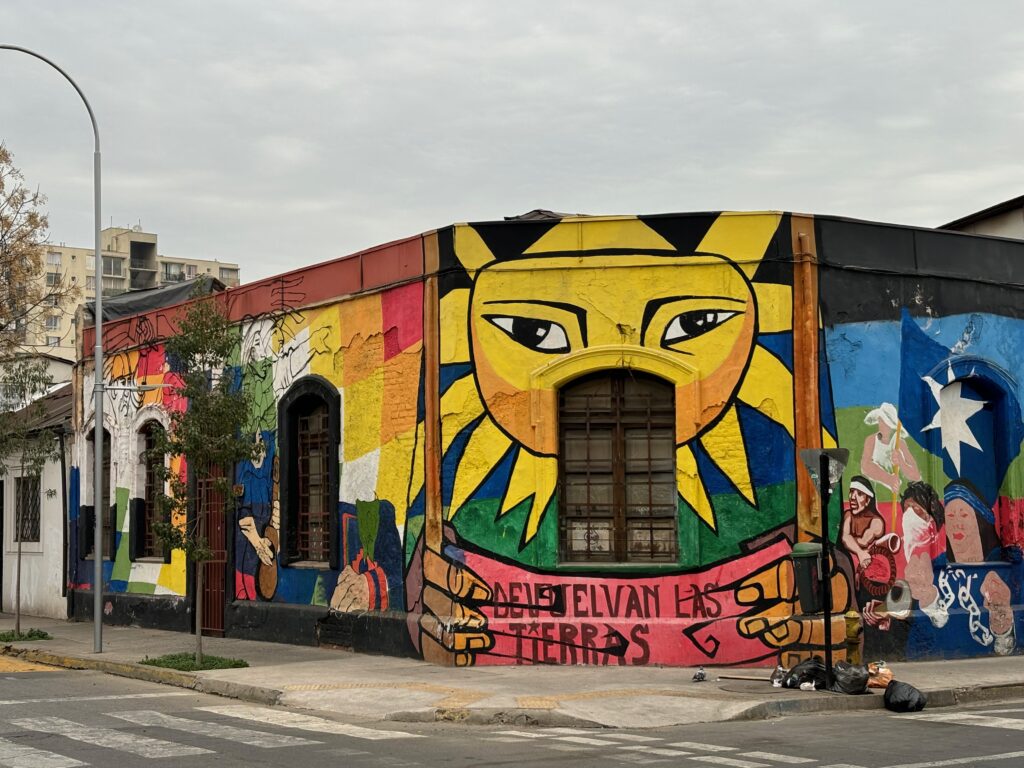
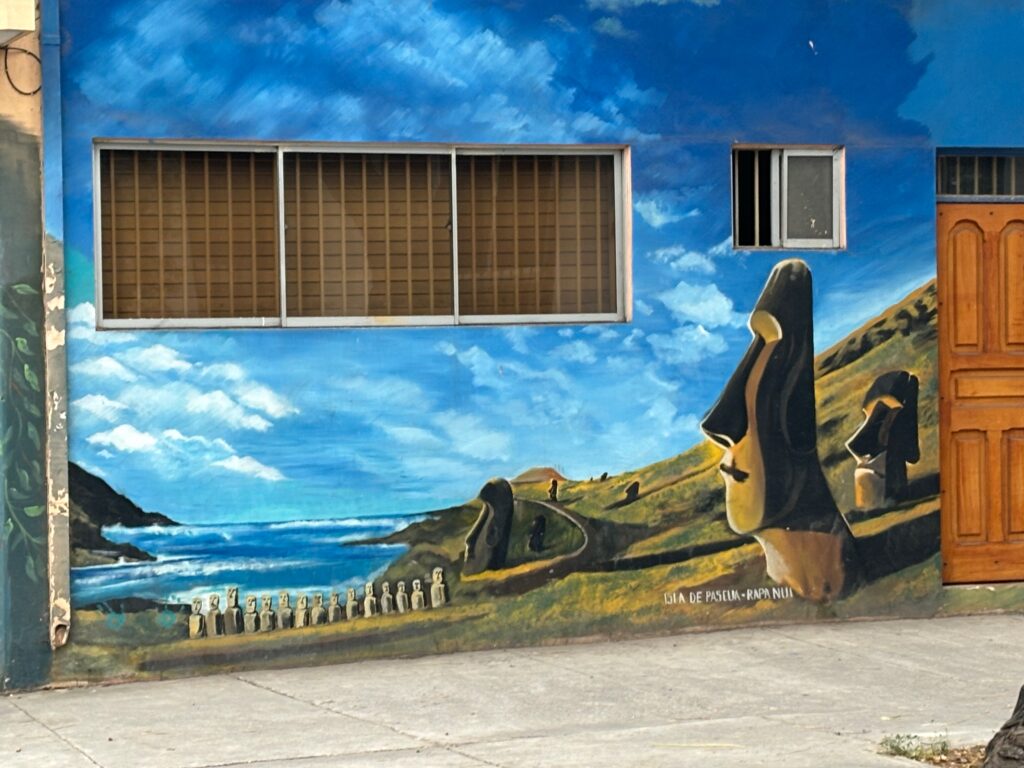
14 Santa Lucía Hill: A small hill in the city center with landscaped gardens, fountains, and a castle-like fort. Rising about 69 meters (226 feet) above Santiago, it was known as Huelén by the indigenous Mapuche people. In 1541, Spanish conquistador Pedro de Valdivia founded Santiago at the foot of this very hill and renamed it Santa Lucía in 1543 in honour of Saint Lucy, whose feast day was celebrated on December 13, the day he began the conquest. I spent a fair bit of time exploring the winding paths (some were closed for maintenance) and stairways that lead to the top of the hill, where the views of Santiago and the Andes are stunning. One of the hill’s most striking features is its elaborate and ornate architecture: fountains (not all working), statues, and terraced gardens. In the middle is the Castillo Hidalgo, a castle built in 1816.
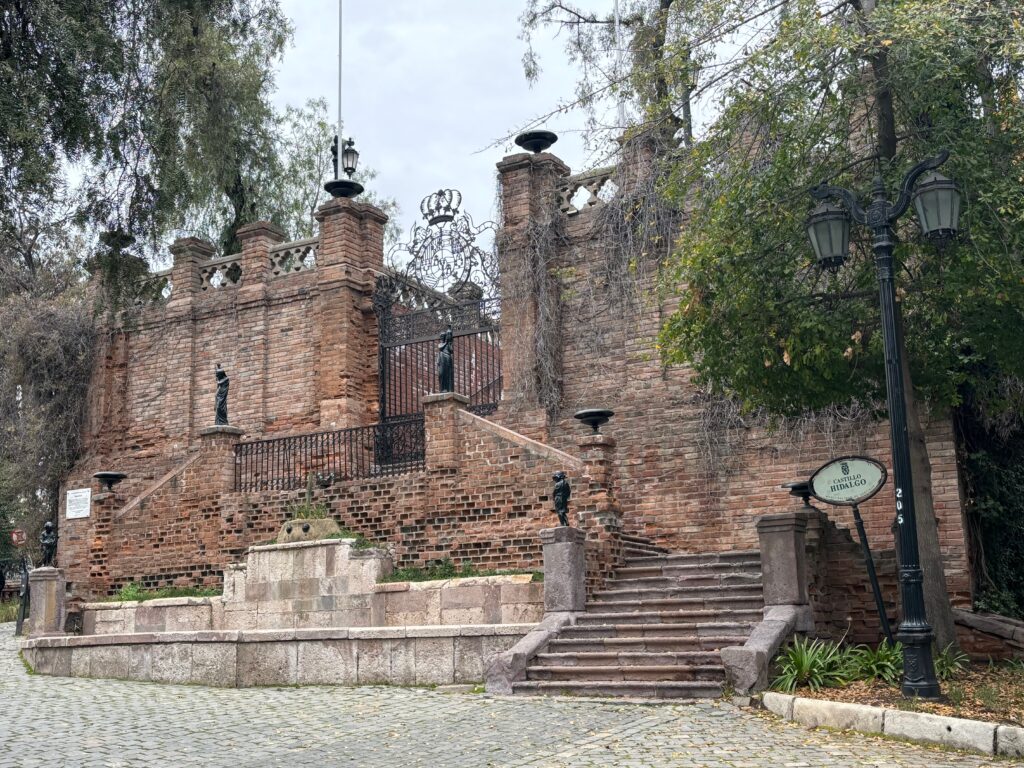
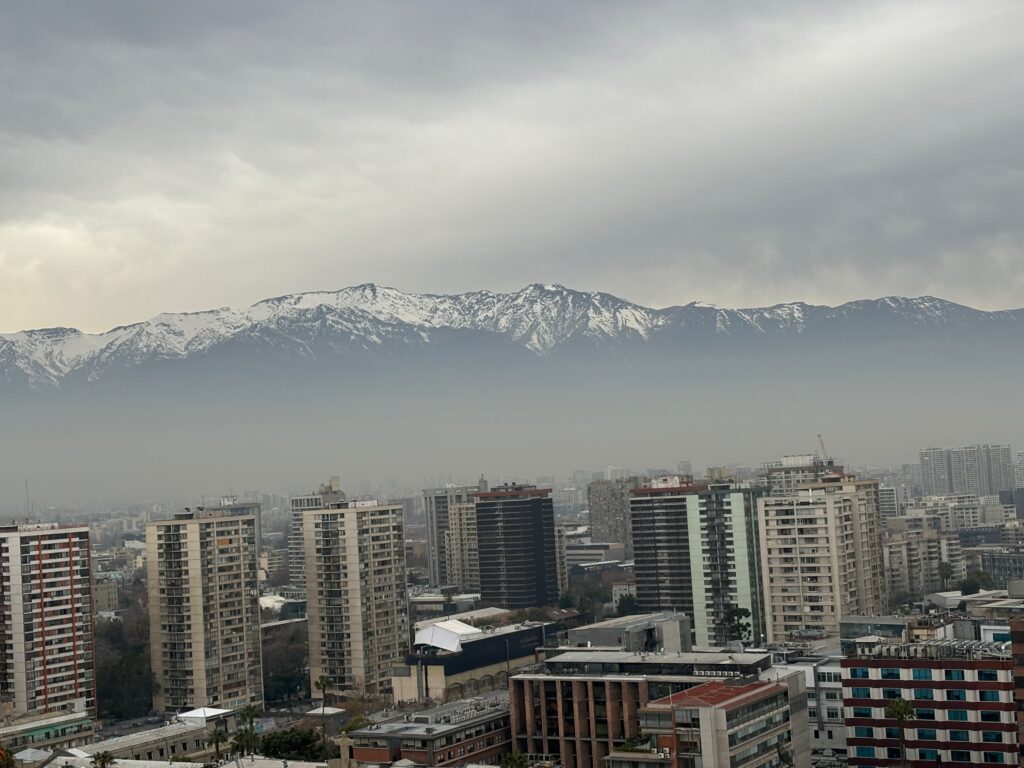
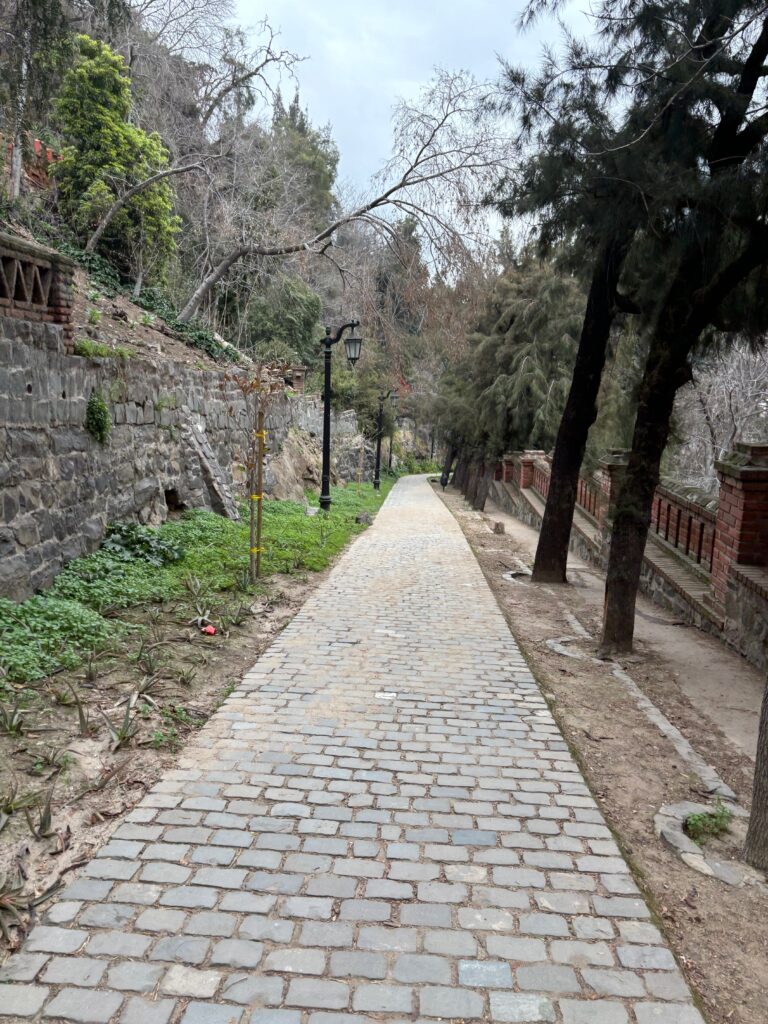
15 Mercado Central: A bustling market known for its fresh seafood and traditional Chilean dishes. Metro : Puente Cal y Canto (Line 2)
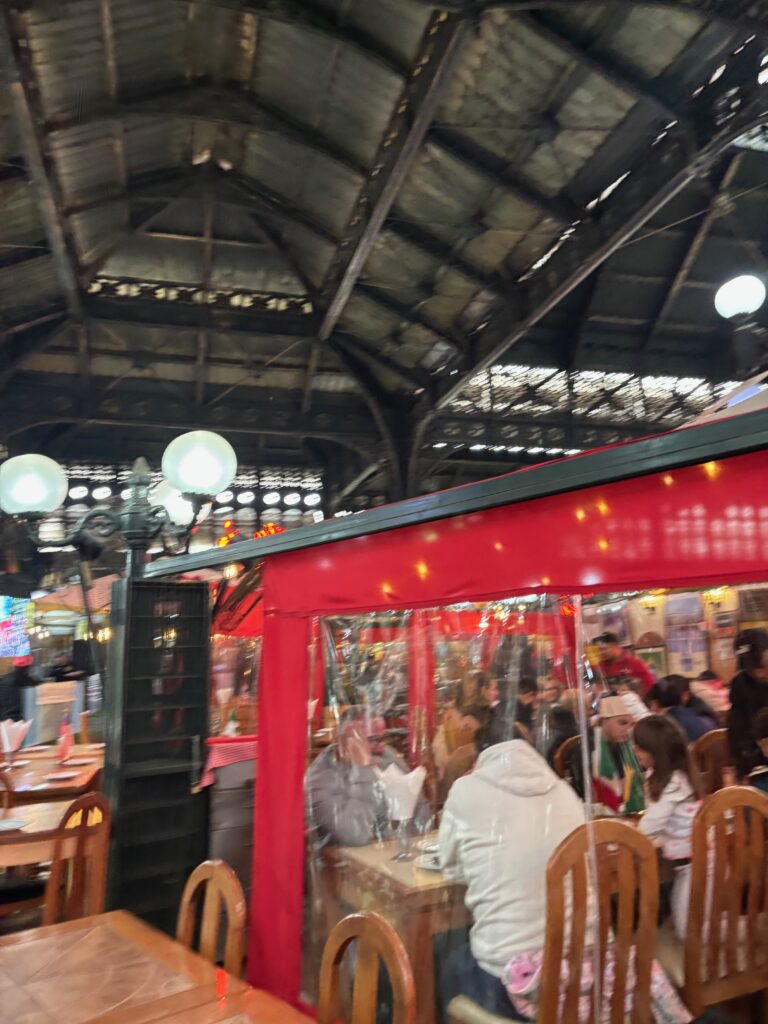
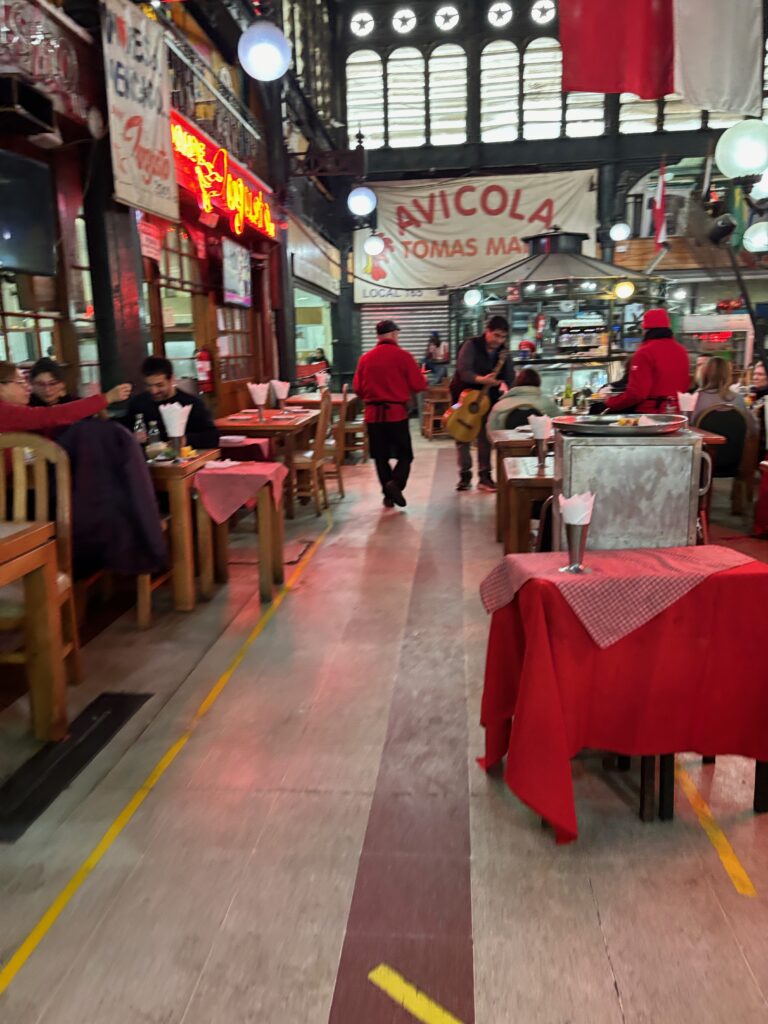
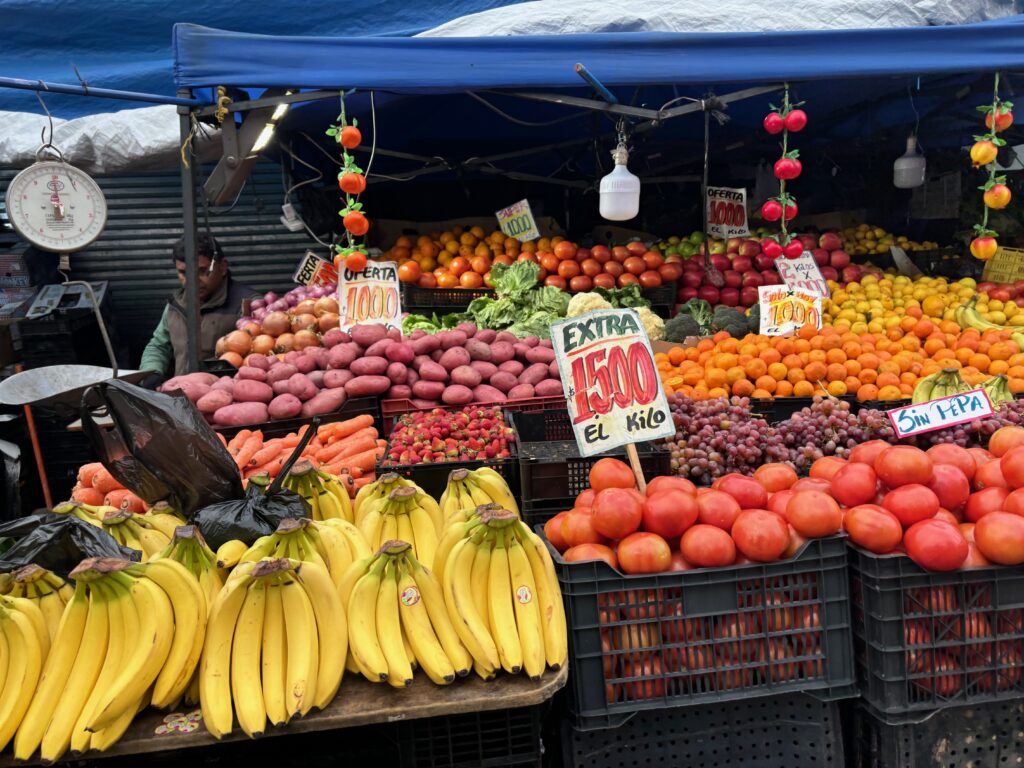
16. Estación Central/Alameda: Santiago’s historic central railway station, designed by French architect Gustave Eiffel, is a striking example of 19th-century architecture and remains a bustling hub of transportation. It is a signature feature of Eiffel’s work and provides a grand and airy atmosphere for travellers. The facade of the station is adorned with intricate details and classical elements. The station is a little run-down today, a haven for pickpockets, and the modern shops don’t add to the beauty of the architecture. I felt quite sad about it. It’s well worth checking out for the building and the snapshot of modern city life. Metro: Estación Central (Line 1)
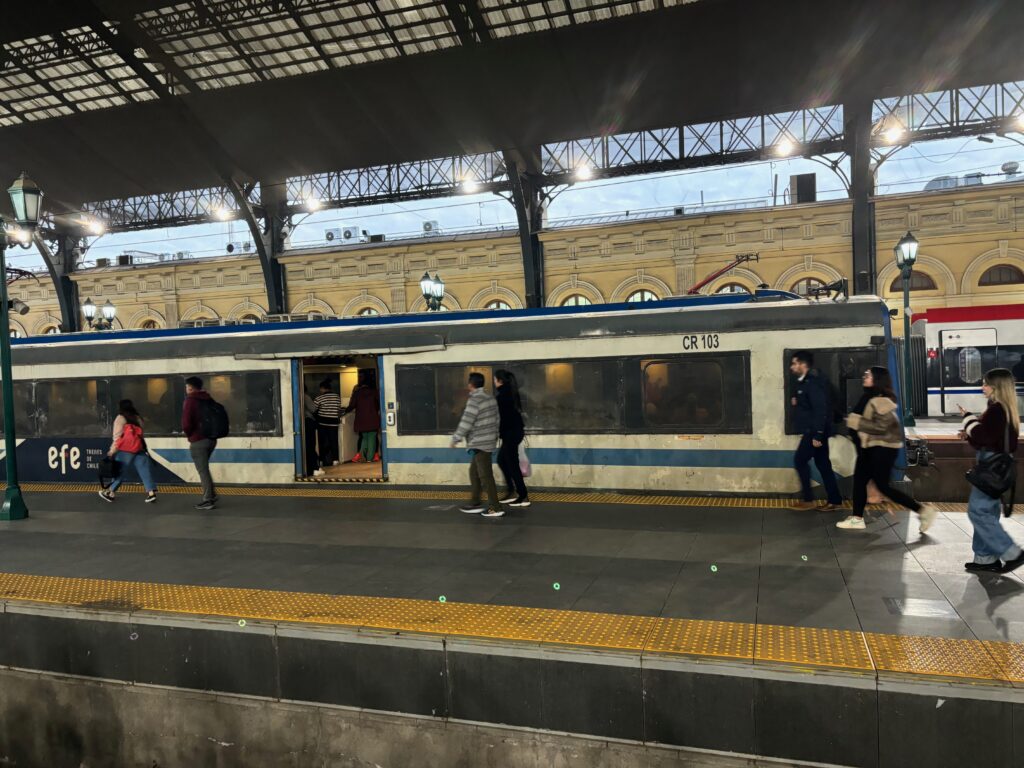
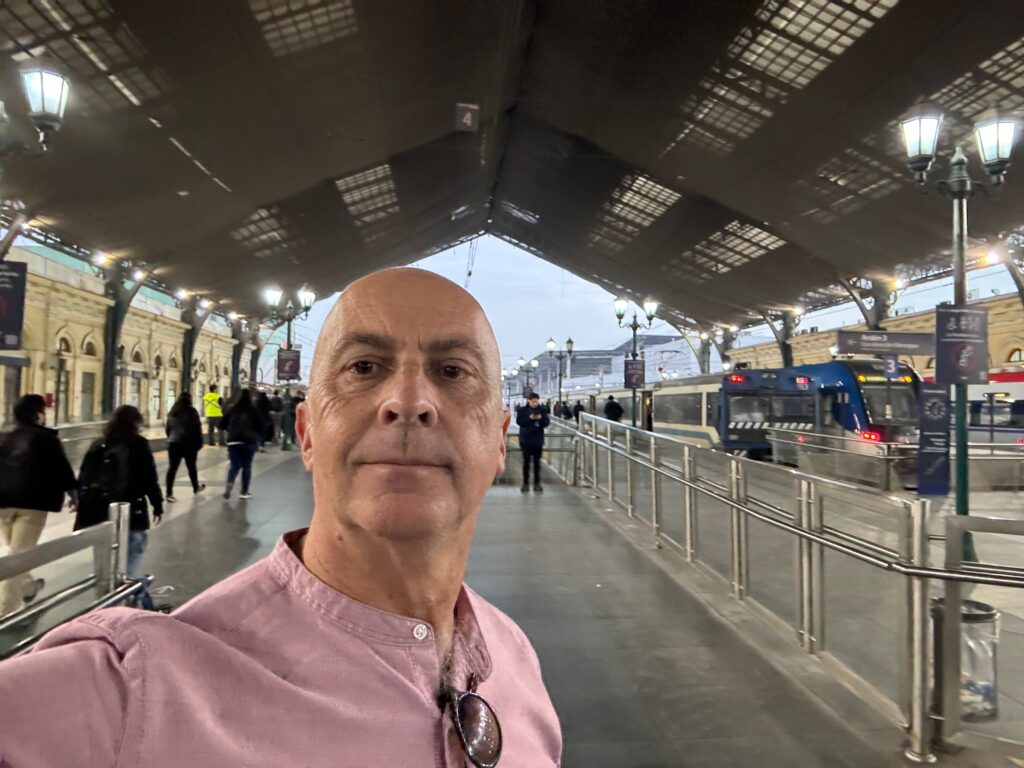
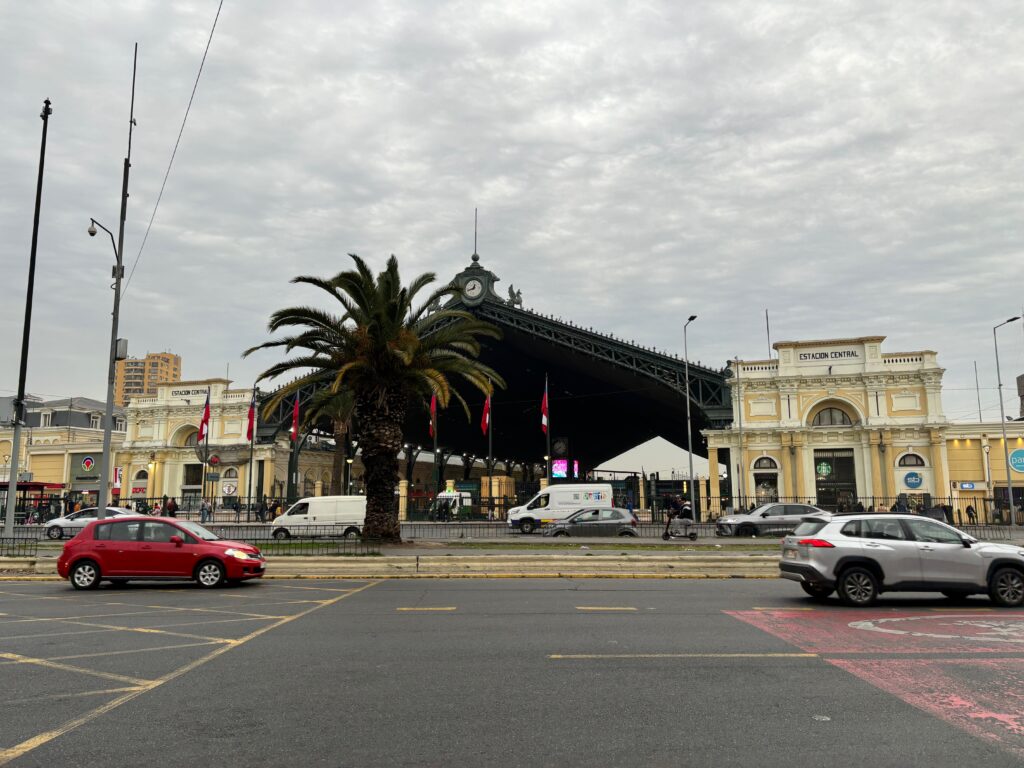
17 Metropolitan Cathedral of Santiago completed in 1780, is the seat of the Archdiocese of Santiago and a beautiful example of neoclassical architecture. Its grand interiors and detailed altars make it a must-visit for those interested in the city’s religious heritage.
18. Parque de las Esculturas (Sculpture Park). This park is known for its open-air display of modern sculptures, offering a serene environment with views of the Mapocho River and the Andes. It’s a popular and beautiful spot for locals and tourists alike, combining art and nature in the heart of the city.

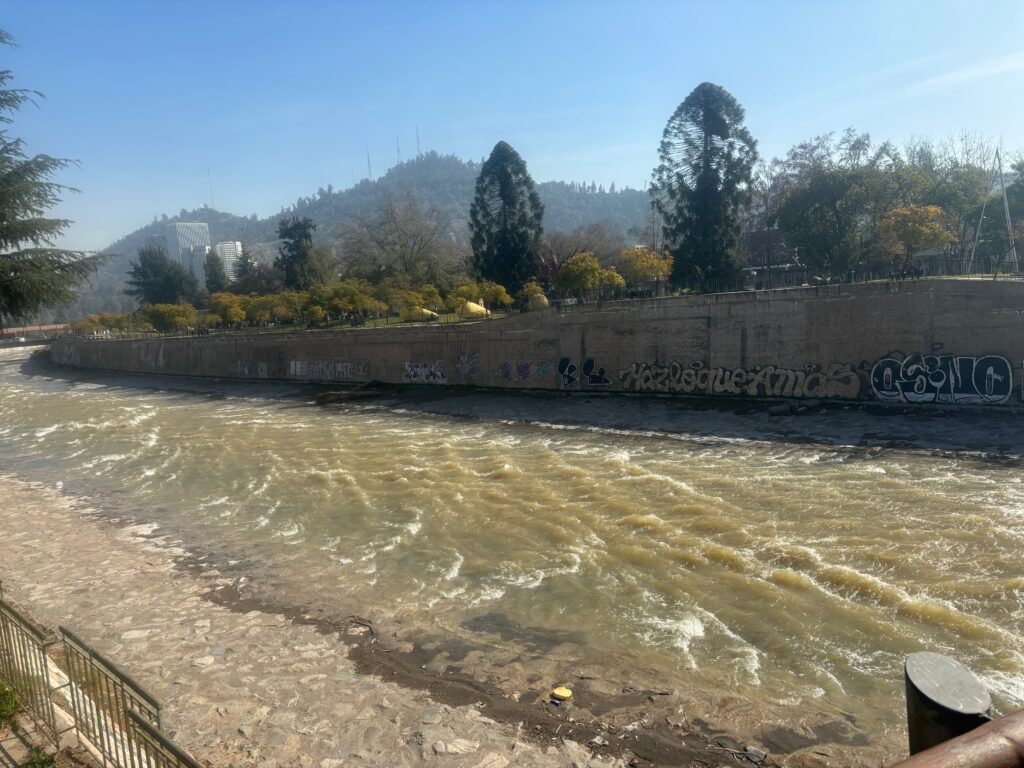
19. Cementerio General: This historic cemetery is one of the largest in Latin America and is known for its impressive mausoleums and sculptures. It’s also the final resting place of many of Chile’s most notable figures, including former presidents and famous artists.
20. La Moneda Palace: The seat of the President of Chile, this neoclassical building is rich in history. Metro: La Moneda (Line 1)
Crime and Safety: 63%
Santiago is generally considered a safe city, especially when compared to other major cities in Latin America. It has a murder rate of 10.1 per 100,000, which is comparable to medium-sized U.S. cities like Toledo, Ohio, Spokane, Washington, or Fort Worth, Texas, but notably higher than most Australian or European cities. Violent crime is relatively rare in areas frequented by tourists, but some neighborhoods are best avoided, especially after dark.
Petty crime, however, is somewhat higher than in other cities and a growing concern for locals. Reports of bag and phone snatching by thieves on motorbikes are not uncommon. I strongly recommend being cautious with your valuables, especially in downtown and central city areas, and on the metro. Always keep wallets hidden and guard your bags and phones carefully.
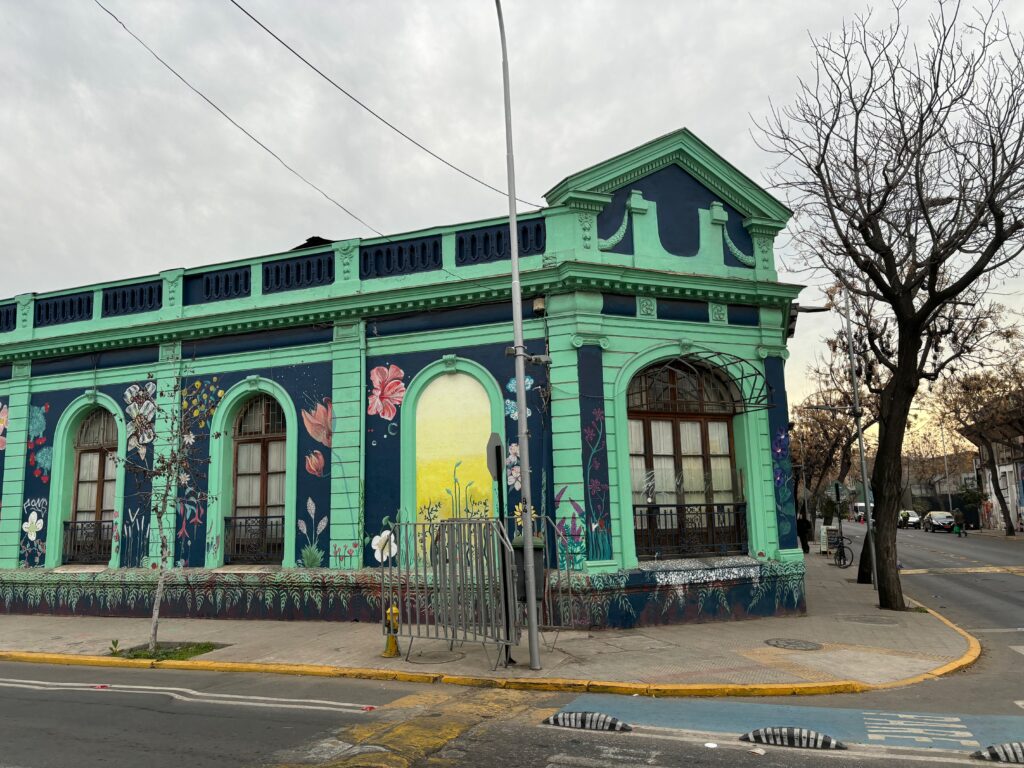
I try to blend in by dressing and acting like a local. When unsure of directions, I discreetly duck into a cafe or store to check my phone.
I was careful to take photos quickly to avoid drawing attention to myself or my equipment, which meant some of my photos, especially at the central station, were a bit limited as a result!
The Carabineros, Santiago’s police force, are known for being helpful and maintaining a visible presence in popular areas, contributing to the overall sense of security in the city
Climate and Weather
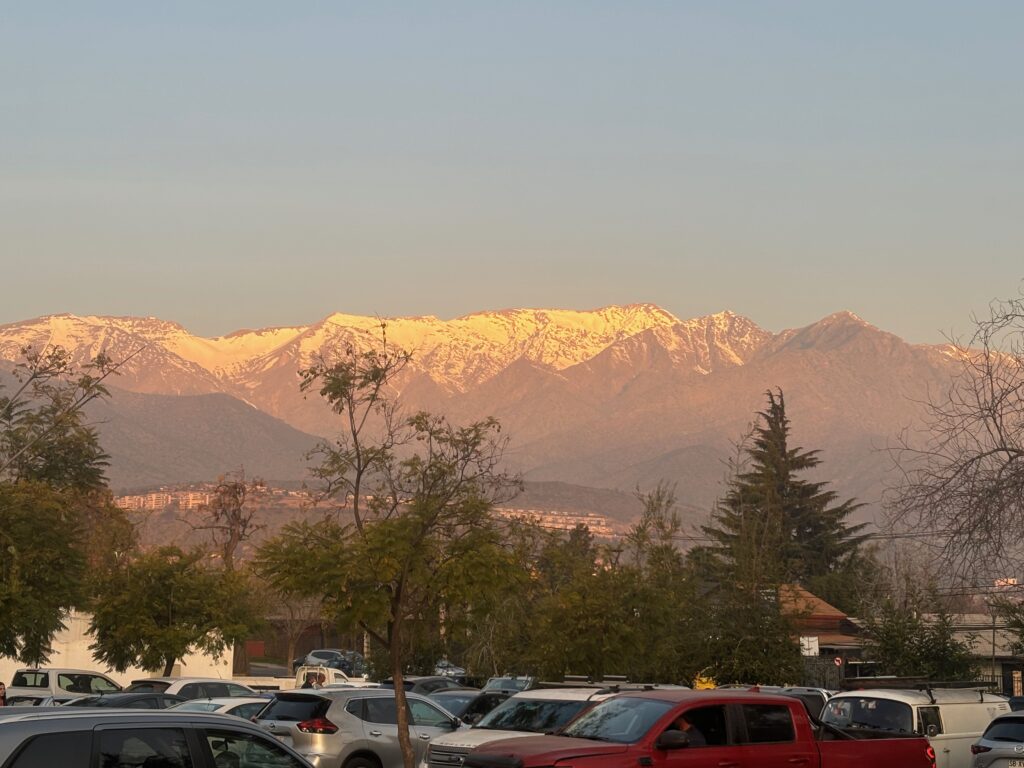
Santiago has a Mediterranean climate with four distinct seasons. Summers (December to February) are hot and dry, with temperatures often exceeding 30°C (86°F), while winters (June to August) are cooler and wetter, with temperatures ranging from 3°C to 15°C (37°F to 59°F). Snow is rare in the city itself but common in the surrounding mountains, making it a popular destination for winter sports.
The best times to visit are during the spring (September to November) and autumn (March to May) when the weather is mild and the city’s parks and gardens are at their most beautiful.
Costs
Santiago is one of the more affordable capital cities in South America, though costs can vary depending on lifestyle and location. The cost of living index ranks Santiago lower than many major global cities:
- a meal in an inexpensive restaurant cost around CLP 5,000 to 10,000 ($6 to $12 USD)
- mid-range restaurants typically cost between CLP 15,000 to 25,000 ($18 to $30 USD)
- Four-star hotels in Santiago range from $70 to $120 USD per night,
- a five-kilometre (three-mile) taxi ride costs around $5 USD.
Food
Santiago offers a vibrant culinary scene that reflects Chile’s rich food culture. Here are my top must-try foods:
- Empanadas: These savoury pastries are filled with ingredients like cheese, seafood, or the classic pino (ground beef, onions, raisins, black olives, and a hard-boiled egg) are sold everywhere.
- Pastel de Choclo: A hearty corn pie made with ground meat, chicken, olives, and hard-boiled eggs, topped with a sweet corn crust. YUMM!
- Cazuela: A traditional Chilean soup made with beef or chicken, corn, potatoes, pumpkin, and rice.
- Choripán: A popular street food, this is a grilled chorizo sausage served in a crusty bun, often with pebre (a Chilean salsa) on top.
- Completo: Chile’s take on the hot dog but much nicer, typically loaded with avocado, mayonnaise, and tomato, among other toppings
- Pebre: This tangy Chilean salsa made from tomatoes, onions, cilantro, garlic, and chili peppers is served as a condiment with many dishes, especially with bread at the beginning of meals.
Coffee Adventures
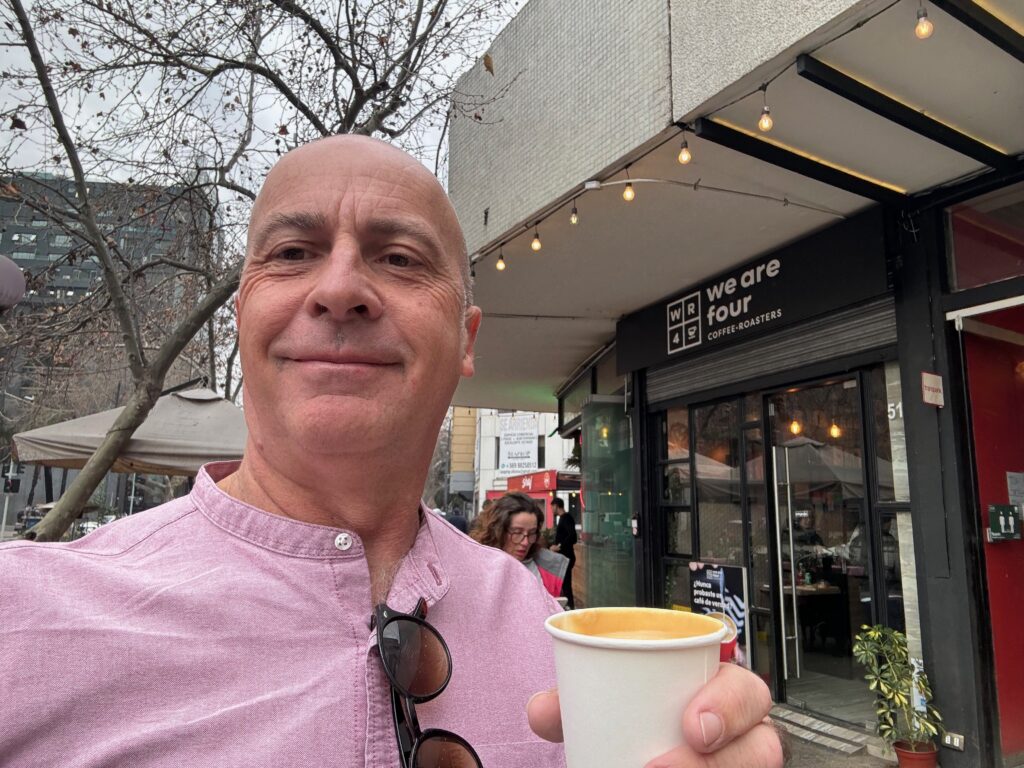
Santiago’s coffee culture was impressive, with a number of specialty coffee shops across the city. I discovered that Santiago’s coffee scene is as diverse as its neighbourhoods, offering everything from traditional café cortado to more modern, artisanal brews.
I enjoyed a coffee in multiple places across the city.
Vibe: 78%
Santiago often surprises visitors with its blend of modernity, culture, and quality of life, even though it’s not always as high-profile as other global cities. It’s a dynamic place with a lot to offer, and these rankings highlight its strengths. While wandering through historic neighbourhoods, sampling cultural venues, or enjoying the city’s parks and open spaces, Santiago didn’t disappoint. The stunning views of the Andes that frame the city blew me away, adding a dramatic backdrop to daily life.
There was something, however, that felt slightly off. The city resembled Buenos Aires in some areas, as it felt somewhat grim economically. The people, while friendly, didn’t seem as warm as in other parts of Latin America, such as Brazil, Argentina, Panama, or Costa Rica. This subtle difference in atmosphere made Santiago unique, yet it left me with a feeling I couldn’t quite put my finger on.
In essence, Santiago left me with a mix of admiration for its modernity and culture, but also a lingering sense of something missing—perhaps a warmth or vibrancy that I’ve felt more strongly in other parts of Latin America, making it a city that’s both intriguing and quietly complex. If you have been, how did it make you feel?
Related Posts
- Under Rated Spokane -16 Top Things for a Great Visit
- Whimsical Portmeirion, Home of “The Prisoner”
- Canterbury: Historic Gem of Southern England
- Stupendous Shanghai
- One Amazing Travel Year: Countless Stories across 23 Countries, 60 Cities
,


Leave a Reply